The country of Uzbekistan may lie in plain sight in the middle of Asia, but most people still don’t know much about it. People who were alive before 1991 may recall that Uzbekistan is one of fifteen nations that gained their independence after the fall of the Soviet Union. Those who prefer ancient history may have heard of UNESCO World Heritage cities like Khiva, Bukhara, and Samarkand. But very few can tell you about Uzbek food, let alone the Uzbek dishes you must try in Uzbekistan.
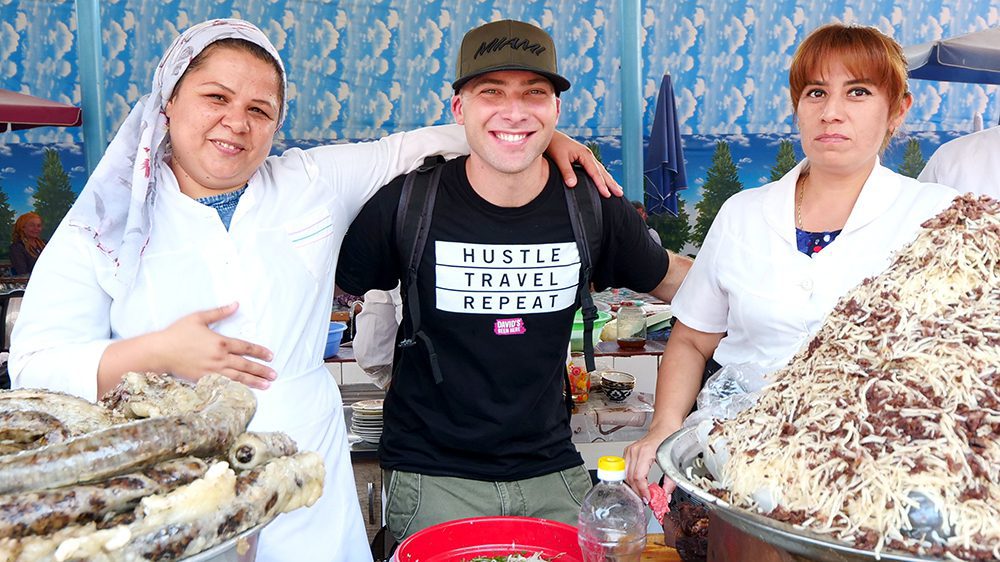
That’s where this food guide steps in. At some point as I traveled around Uzbekistan in August and early September of 2019, I realized that I hadn’t yet had a single bad meal in the country. My meals ranged from street food in the capital city of Tashkent to feasts in fancy, sit-down restaurants to random eateries by the side of the road midway between cities. And it was all delicious and made me wonder why more people don’t talk about Uzbek food.

Uzbek food is a lot of things. It’s hearty, heavy, and fatty, yet healthy at the same time. Everything in the country is farm-to-table. The meat you eat there was likely butchered earlier that day and the fruits and vegetables tend to be locally-sourced. The food is almost never frozen, so it’s literally as fresh at it comes. It’s also organic, as nothing I came across contained artificial hormones, pesticides, flavors, or colorings.
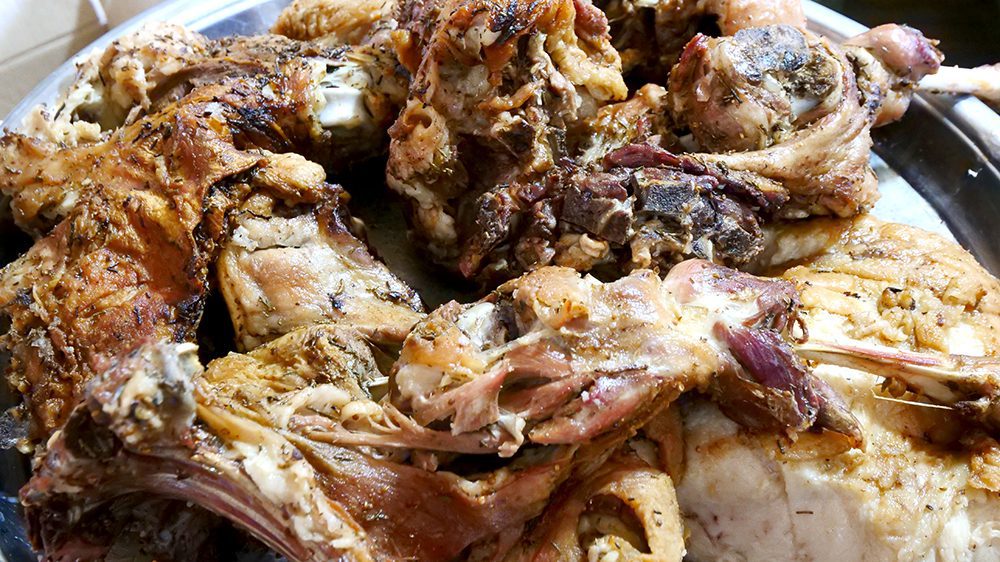
Grain farming is big in Uzbekistan, so most meals will come with bread. The people there are mostly carnivores, as there are very few dishes endemic to the country that could be considered vegetarian or vegan. Lamb, and to a lesser extent, beef, take center-stage here, though other meats like chicken and even horse can be found. Uzbekistan is a land of hearty stews and oily salads. The dishes tend to be light on spices, yet still so flavorful that they have you clamoring for seconds. I know from experience. These are the 25 Uzbek dishes you must try in Uzbekistan.

Tashkent is the capital of Uzbekistan and an ancient city at roughly 2,200 years old. Of all the cities I visited in Uzbekistan, it’s the one that bore the most signs of Soviet control, with its wide streets, apartment blocks, and large plazas. It’s also a wonderful city to dip your toe into the world of Uzbek cuisine!
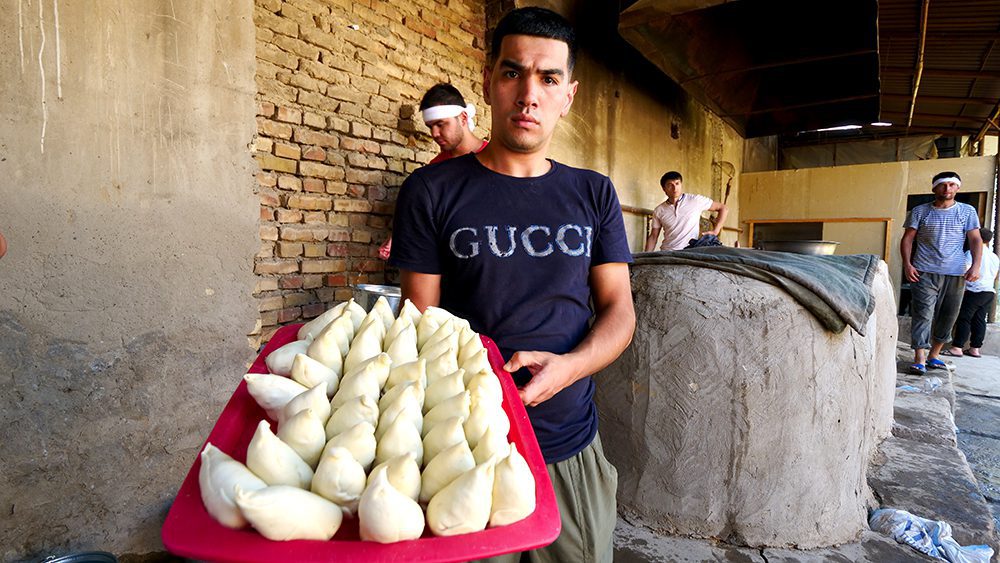
Somsas are delicious, filling meat pastries that have regional variations throughout Uzbekistan. They were the first Uzbek dish I tried upon landing in Tashkent and they did not disappoint. When you’re in Tashkent, head over to Minor Somsa Restaurant to try one (or two, but who’s counting?).
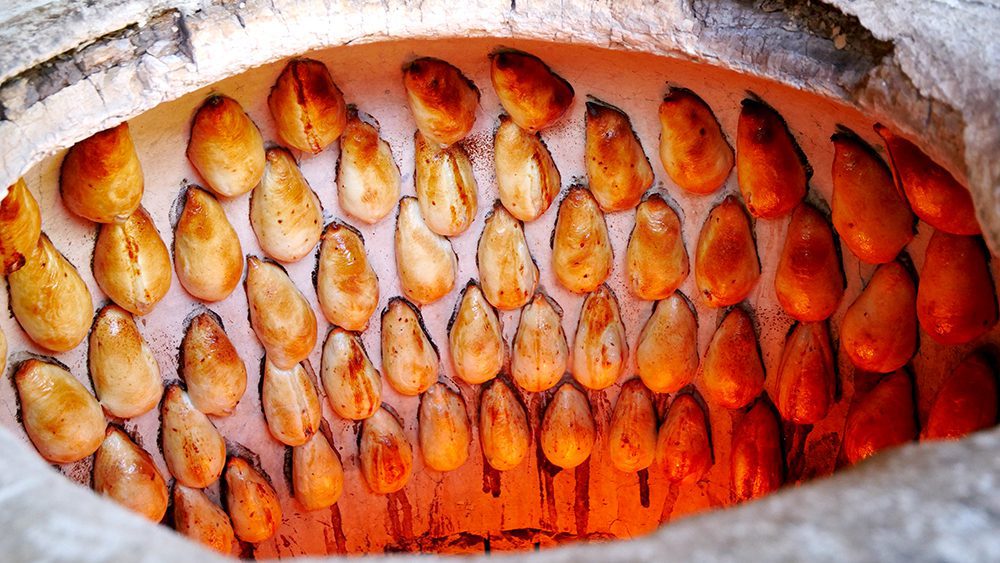
Unlike many other meat-filled pastries, like Indian samosas and Latin American empanadas, somsas aren’t fried. They’re baked by stamping them to the inside wall of a large, clay oven called a tandoor. There, they turn crispy and golden brown until they’re ready to be scraped off the sides. The ones here contain tender, juicy, and perfectly spiced beef and onions. That said, you can also find ones containing lamb, vegetables and cheese, and even pumpkin. Try them with some tomato sauce for an acidic burst of flavor!

The exterior of the somsas is flaky and perfectly crisp. Some varieties are topped with sesame seeds, but the ones at Minor Somsa Restaurant aren’t. They’re also teardrop-shaped, but throughout my trip, I also came across round and rectangular ones as well. And at $0.30 USD a pop, the ones at Minor Somsa Restaurant can’t be beat!
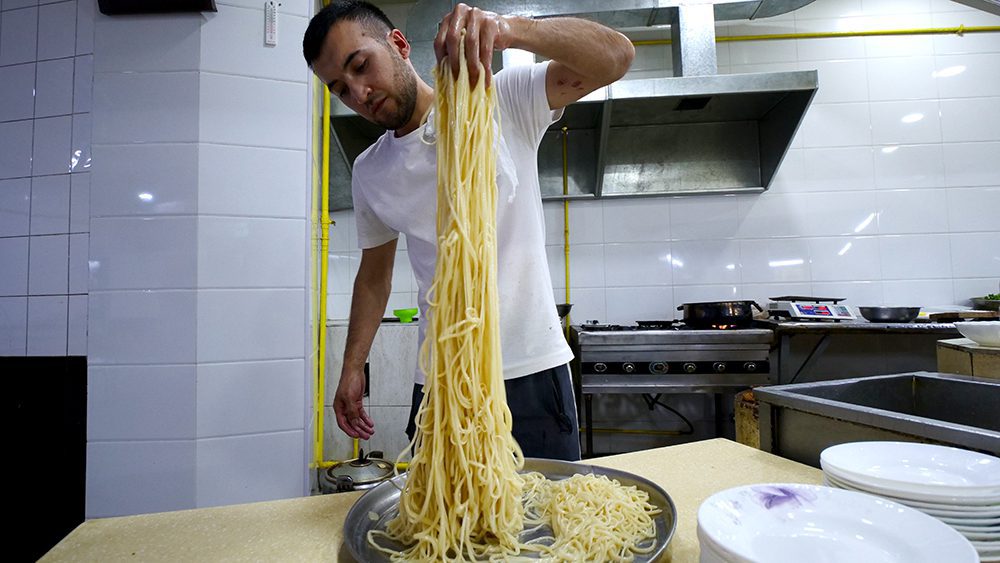
In my opinion, one of the best things about Uzbek cuisine is the wonderful mix of influences you can taste in its food. I could taste similarities to Turkish and Nepali food for sure. Some dishes even have Chinese and even Indian influences due to the country’s position along the Silk Road. One of my favorite Uzbek dishes you must try in Uzbekistan that contains hints of Chinese heritage is a noodle dish called lagman.
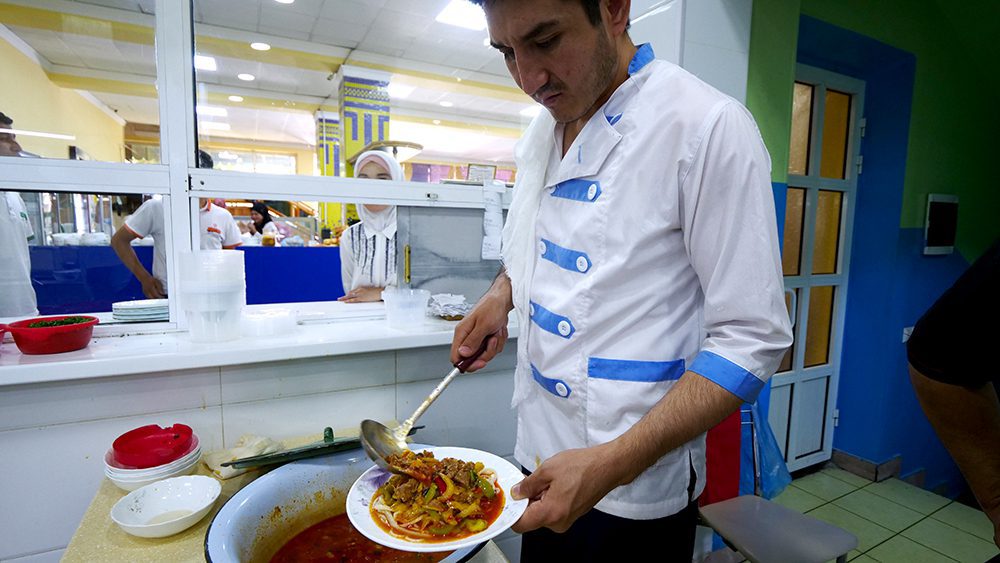
Lagman is a type of stew that contains hand-pulled noodles, beef or lamb, tomatoes, carrots, onions, bell pepper, and more. The hand-pulling of the noodles gives them a chewy, al dente texture that reminded me of homemade pasta dishes I eat when I visit my family in Italy. It’s a dense, stick-to-your-ribs type of dish and is light on the spices.
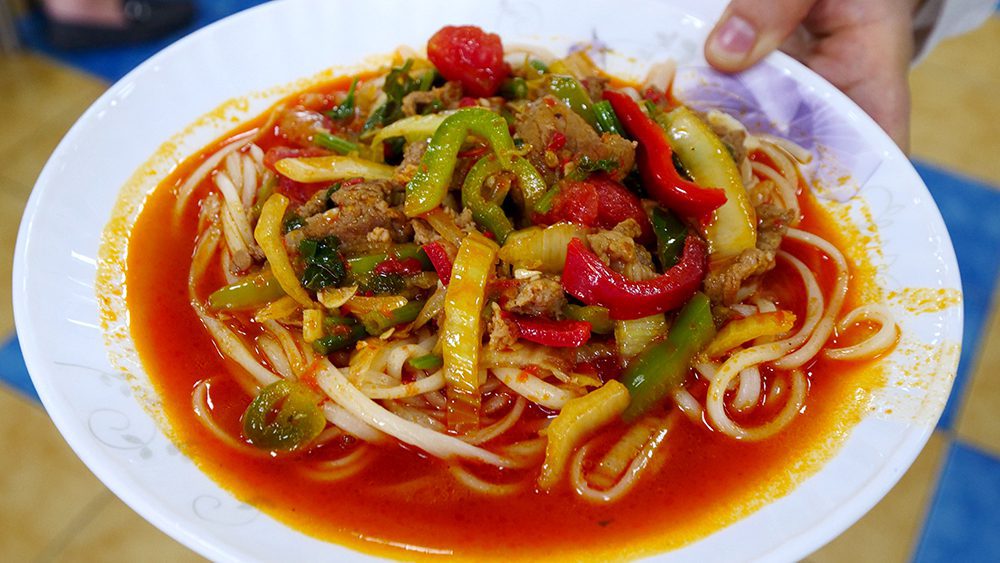
Despite that, the undeniably fresh ingredients and flavorful broth had my mouth watering from the very first bite. I tried this dish at a restaurant called Lagman House. When you visit, be sure to have some of their soft and fresh Uzbek bread—tandyr non—with the lagman. It’s a match made in Uzbek gastronomical heaven!
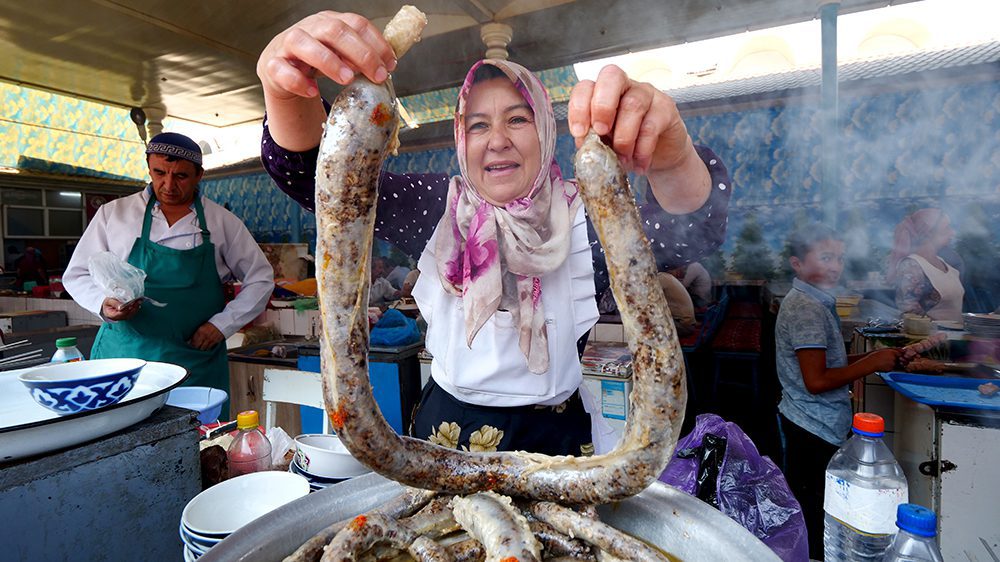
One of the best places to try some of the top Uzbek dishes you must try in Uzbekistan is Chorsu Bazaar in Tashkent. This bazaar is the largest and oldest traditional market in the city. And while it’s a great spot to people watch and shop for fresh produce, it’s also one of the few spots in the country where I found genuine street food. One of my favorites was the dish known as hasib.

Hasib is a delicious lamb sausage made with an intestine casing. I first tried it by itself and was blown away by its tenderness and flavor. But that was nothing compared to the flavor bomb that went off in my mouth when I tried it in a bowl of broth a few minutes later. The rich flavor of the broth permeated every inch of the sausage, making each bite a juicy, scrumptious experience I never wanted to end.

My favorite thing about the hasib was how fresh it was. After traveling to many countries where meat is rarely, if ever, frozen, it has become apparent to me when meat is fresh. The lamb this hasib came from had likely been alive perhaps hours earlier, and I could taste it. There’s nothing like fresh lamb and this is sausage is some of the best I’ve found in the world. Another plus is the broth, which helped my throat, which had gotten raw and scratchy due to the dry desert heat of Uzbekistan.

While you’re exploring the street food section of the Chorsu Bazaar, it will be hard to miss the intriguing mounds of noodles and meat piled behind the counter. This is a dish called norin, also spelled naryn. It was a favorite dish of oriental merchants centuries ago and is one of the top Uzbek dishes you must try in Uzbekistan today.
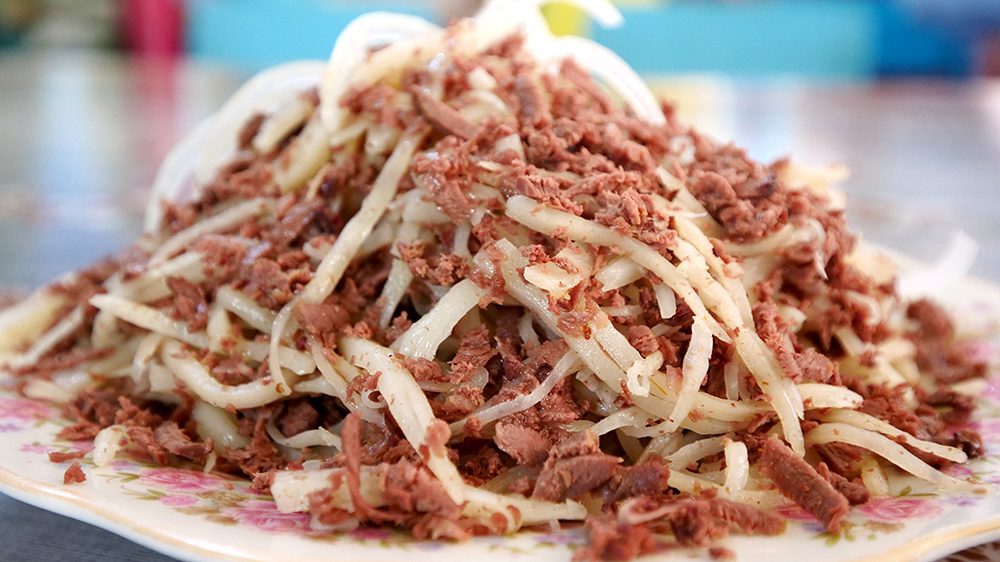
This norin is made up of thick handmade noodles, boiled horse meat, onions, and black pepper. If you’ve never had horse meat, it’s almost like a gamy beef. It won’t be to everyone’s liking but I really enjoy it. The gaminess of the meat pairs well with the almost cheese-like flavor of the noodles. Combine that with the onions and slight kick of the black pepper and you have dense, meaty, and crisp dish full of wildly contrasting textures and strong, unforgettable flavors!
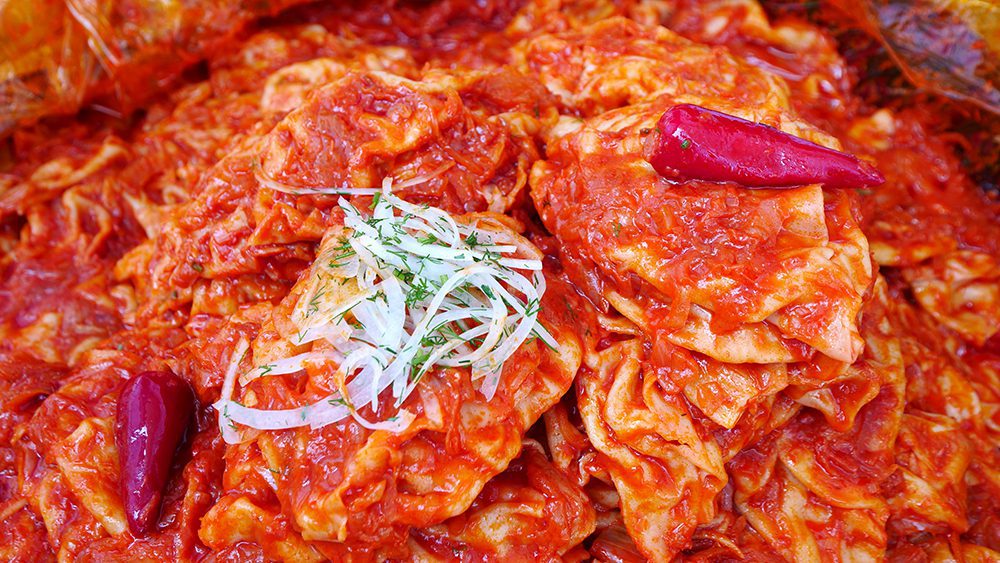
Another of the Uzbek dishes you must try in Uzbekistan is honim. Also available in the street food area of Chorsu Bazaar, this dish woke up my taste buds in a big way! Honim is essentially a large dumpling. It’s stuffed with potato strips, similar to hash browns. The dumpling comes bathed in a tomato sauce with chilies and is topped with fresh onions.

The thing that struck me the most about the honim is how much it tasted like an Italian ravioli. I felt like I could have been eating this dish in Rome! The dough is thin, tender, and delicate, and stuffed to the max with potato. They certainly don’t skimp on the filling or the flavor. It was an unexpected treat that made me realize how diverse Uzbek cuisine is!

Uzbekistan is famous for their kebabs, so I purposely saved them for last during my exploration of Chorsu Bazaar. I’ve eaten kebabs all over the world. Some of my favorites are the ones I tried in the Indian city of Lucknow. I thought I might never find a kebab that tops them, but I must admit, the beef kebabs at Chorsu Bazaar come very close to doing so!
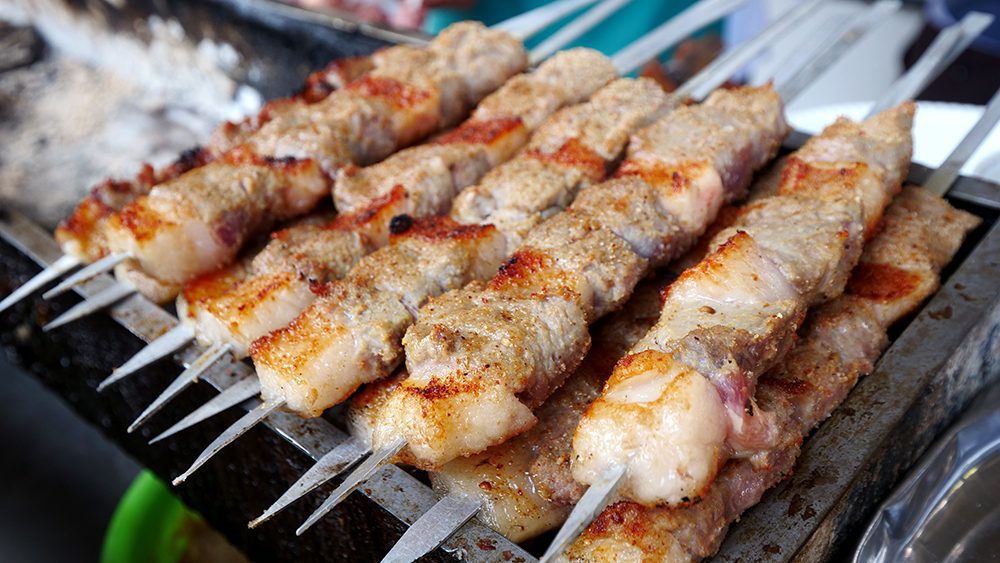
These beef kebabs are served on steel skewers and are one of the most remarkable meat dishes I’ve ever eaten in my life. The secret is that, while the meat is beef, they have lamb fat added to them. The two meaty flavors marry each other in a way I never could have expected. The kebabs are also breaded, so there’s an added textural element that feels really nice in your mouth!

Together, these kebabs are an insane, phenomenal combination of flavors and textures that I couldn’t get enough of. The beef flavor, combined with the gelatinous lamb fat, the crispiness of the breaded crust, and the light charcoal flavor can’t be beat. It’s easily one of my top Uzbek dishes you must try in Uzbekistan!

If there is one dish that has become synonymous with Uzbekistan and Uzbek cuisine, it’s plov. Plov, also known as osh, pilaf, or pilau, is popular rice, meat, and vegetable dish in Central Asia. It’s widely available at most Uzbek restaurants and is also served at celebrations such as parties and weddings. Plov is the national dish of Uzbekistan. It is so ingrained in the culture that it’s actually considered a UNESCO dish.
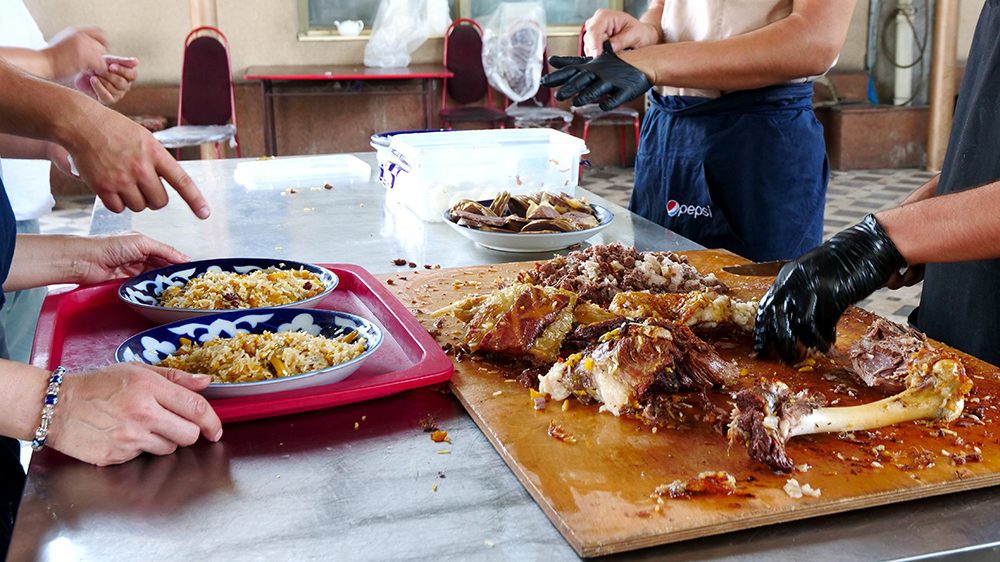
Despite this, there’s no set recipe for plov, as regional variations can be found throughout the country. The best place to try some in Tashkent is Plov Center. There, you’ll see the cooks preparing the plov in huge, cauldron-like pans called kazans. Just one whiff will tell you why this is one of the top Uzbek dishes you must try in Uzbekistan!
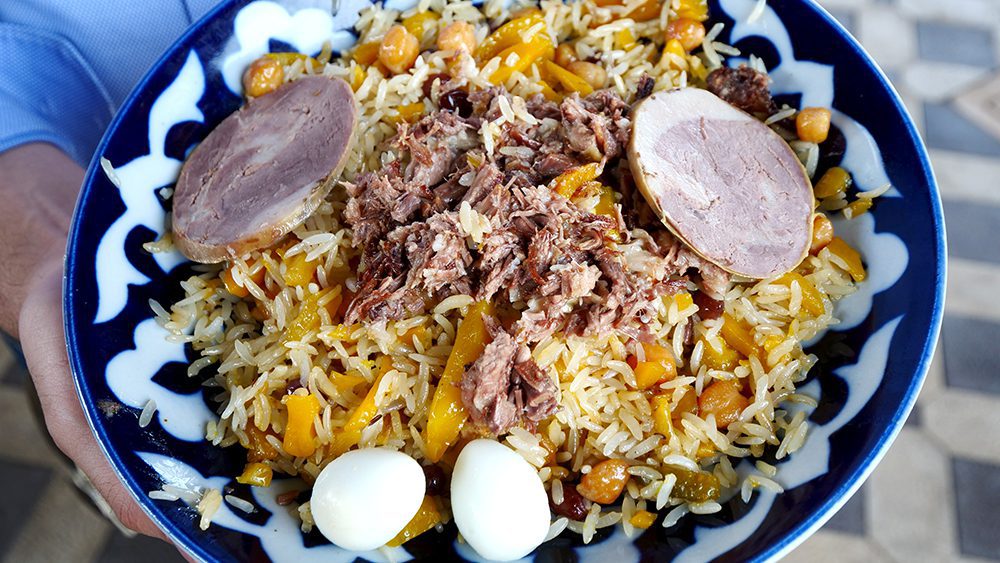
The plov at Tashkent’s Plov Center is made of a combination of white and yellow rice. It also includes lamb, yellow carrots, beef, raisins, quail eggs, chickpeas, oil, and horse sausage. The yellow carrots and raisins add a nice sweetness that contrasts nicely with the salty gaminess of the horse and heartiness of the lamb and beef. The quail eggs also add an interesting flavor and texture, but they work! This plov is a masterclass in Uzbek cuisine! And best of all, it will only set you back 25,000 som, or roughly $3 USD.

Speaking of traditional, there is a restaurant in Tashkent called Ugolok that is famous for its 55-year-old Uzbek fried chicken recipe. During my travels around Uzbekistan, I found chicken to be a rarity, as the Uzbek people seem to prefer lamb, beef, and horse. But if you’re a fried chicken fanatic, you have to head over to Ugolok for what is easily the best chicken in the capital!
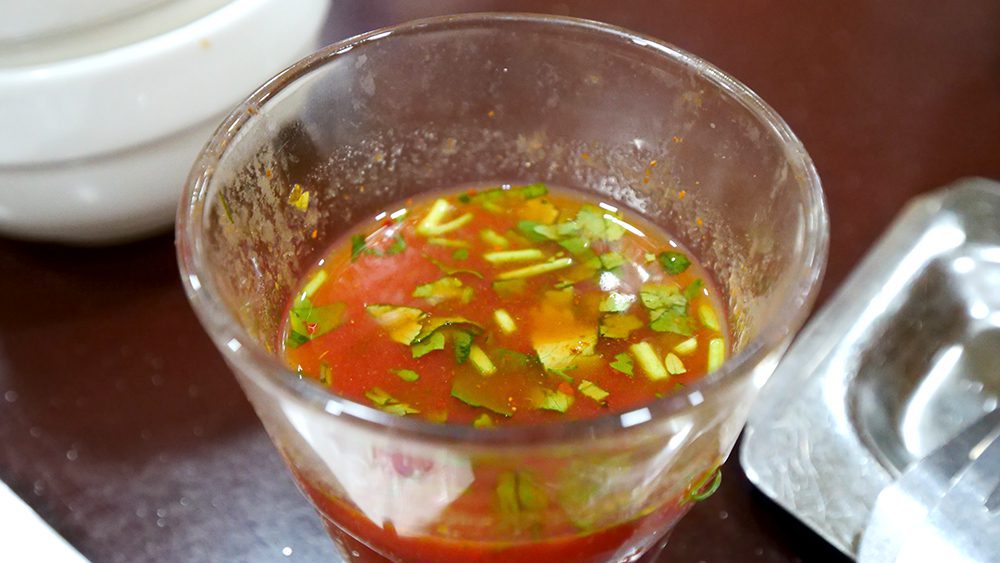
At Ugolok, the chicken is fried in butter instead of oil. And while the abundance of butter makes this an artery-clogging dish for sure, the unbelievable flavor is too good to pass up. The chicken, like everything else in Uzbekistan, is as fresh as you can get. It’s 100% organic and you can taste the quality in every juicy, buttery bite.

Enjoy Ugolok’s fried chicken tabaka with some bread and a tomato-based drink that reminded me of gazpacho. It made my taste buds and belly very happy and I’m sure you will love it as well!

I may have only spent one day in the ancient, walled city of Khiva, but this extraordinary UNESCO World Heritage City left an indelible mark on me. It’s one of Uzbekistan’s most beautiful cities and is chock-full of historical sites to explore. But another reason I couldn’t get enough of this city is its cuisine. I had several phenomenal dishes there that I never saw anywhere else! These are a couple of my favorites.
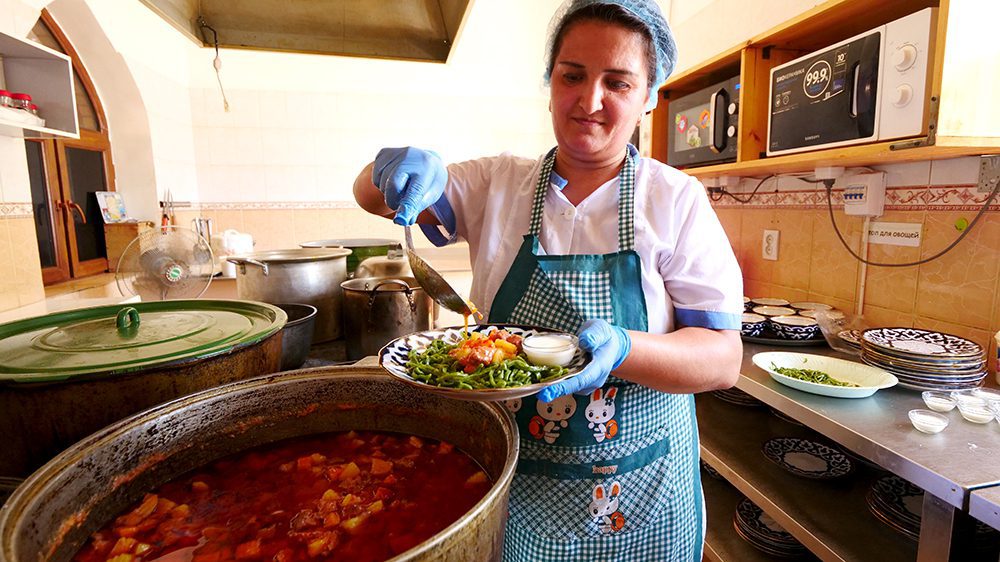
One of the many pleasures of touring Uzbekistan with the World Influencers Congress is that they booked us at some of the top restaurants in the country, like Yasavul Boshi in Khiva. There, I tried a number of mouthwatering dishes, but my favorite was the shivit oshi, which you can only find in Khiva!
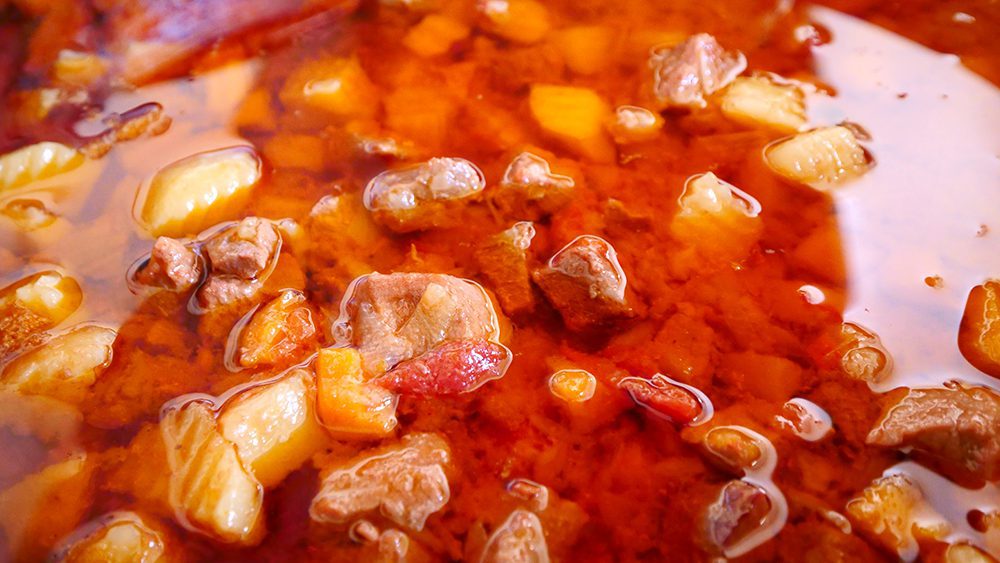
Shivit Oshi is easily the most vibrant and colorful dish I came across in Uzbekistan. It’s a variation of noodle dishes Chinese merchants brought with them as they traveled the Silk Road. It’s made up of bright green noodles infused with dill, which are then topped with beef, tomatoes, peppers, onions, carrots, and potatoes. The result is an insanely colorful and appetizing-looking dish I couldn’t wait to dig into.
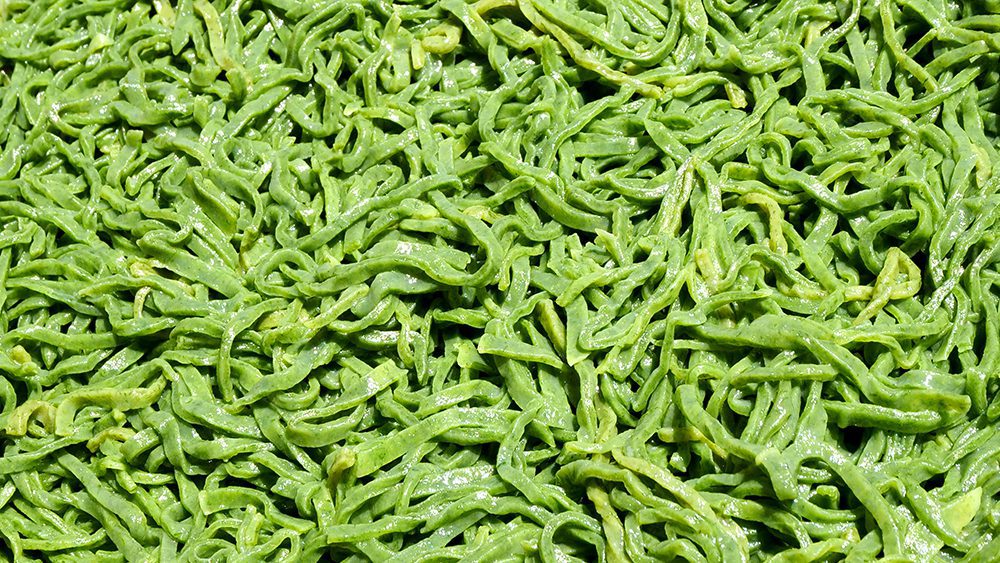
The dish is served with a yogurt sauce on the side. The noodles, vegetables, and meat are decent on their own, but it’s the creamy yogurt that ties all the flavors and textures together. I suggest pouring it into the shivit oshi and mixing it well so that everything is coated in the yogurt. Then, dig in!
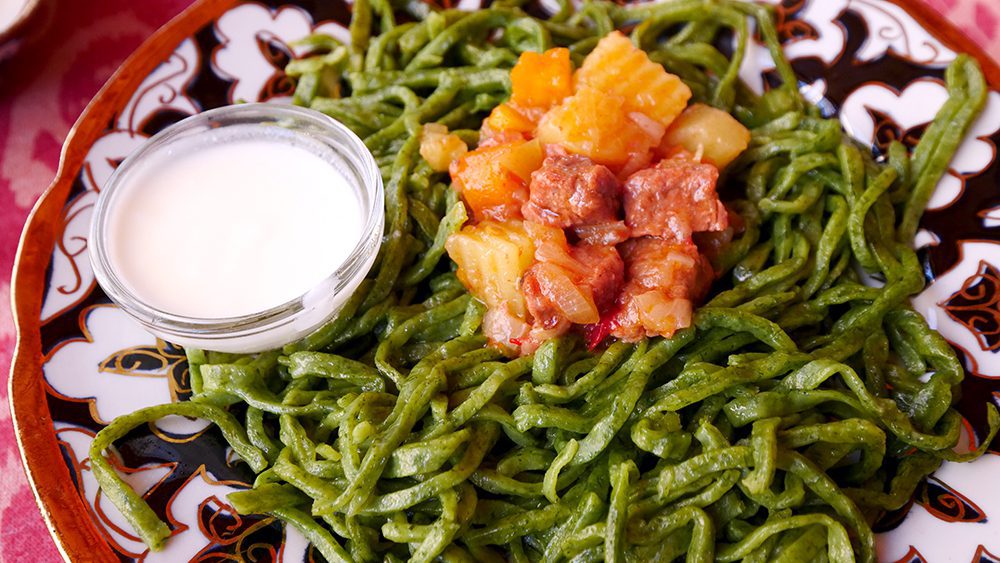
The yogurt turns the shivit oshi into a fantastic rich and creamy pasta. The combination of the al dente noodles, tender beef, fresh and crunchy vegetables, and yogurt was positively drool-worthy. It was like getting an authentic taste of the Silk Road and all of the cultures that influenced Uzbek cuisine. After one bite, you’ll understand why it’s one of the top Uzbek dishes you must try in Uzbekistan!
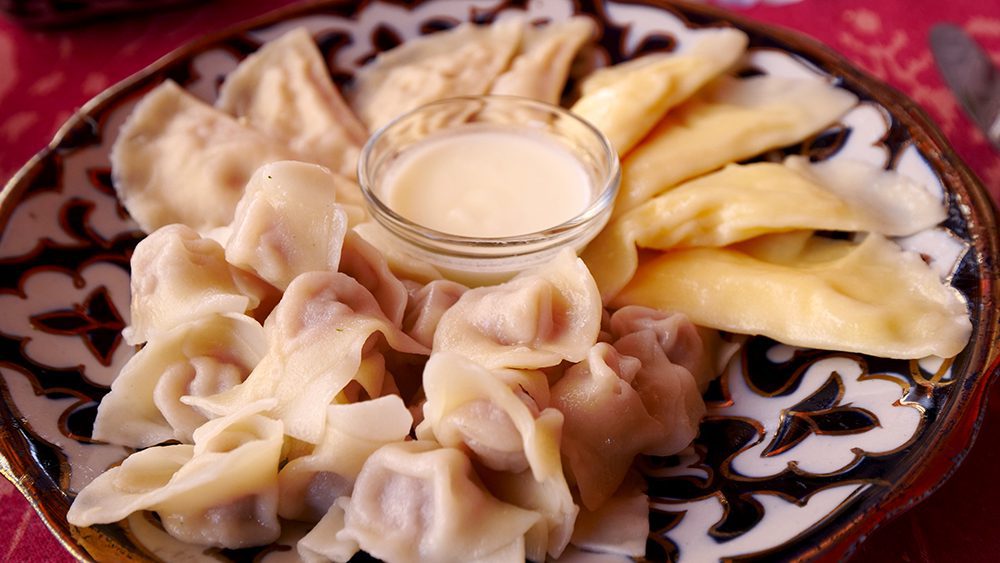
The other dish at Yasavul Boshi Restaurant you cannot afford to pass up is the barak. Barak are essentially dumplings that can have a variety of different fillings, including beef, egg, and pumpkin. The ones at Yasavul Boshi Restaurant are served cold and are meant to be a refreshing snack during the hot, oppressive summer months. This makes them different from other Uzbek dumplings like manti and the fried guzlama, which are typically served hot.

My friends and I enjoyed three different varieties of barak at Yasavul Boshi Restaurant. The first was a ravioli-like dish called tukhum-barak, which had a light and tasty egg filling. We followed it with two different barak containing beef. The first of the two had definite Chinese influences, as it reminded me of slippery wontons I had eaten earlier in the year in Hangzhou. The second beef barak was packed with a delicious, juicy beef that was so tender it practically melted in my mouth.

Having the barak with the yogurt is the real kicker, though. Just like with the shivit oshi, the yogurt bolsters the dish and adds a delightful creamy element to a doughy, meaty dish. They’re one of my favorite dishes you must try in Uzbekistan and are so good!
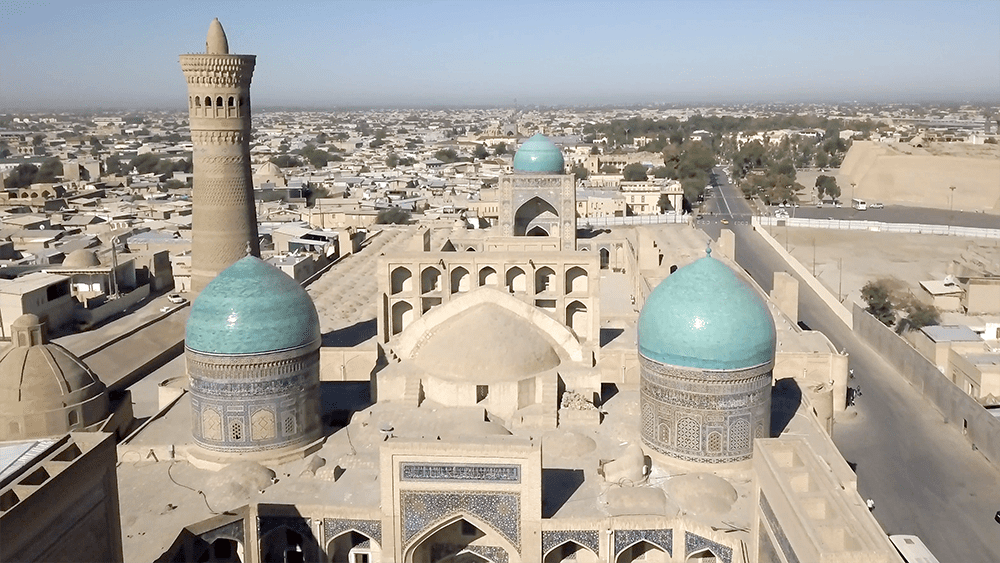
With over 140 historical sites, Bukhara is a great place to dive into Uzbekistan’s history. Some may know that Bukhara strives to keep its traditions alive by preserving ancient craft-making techniques. But another important element of Bukhara is its food. You can’t get a complete picture of the city without digging into its cuisine, so check out my Bukhara food suggestions below!

If lamb is your jam, you will love the lamb soup at Lyabi-Hauz Restaurant, a chaikhana-style (or teahouse-style) spot that features al fresco dining around a beautiful manmade pond. They have indoor seating as well, but I suggest always going for al fresco if the weather is good.

Lyabi-Hauz Restaurant’s lamb soup is sensational! It may be an acquired taste for some, as some of my fellow travelers didn’t enjoy it, but I thought it was perfect. The soup is made up of lamb meat, potatoes, yellow carrots, and chunks of lamb fat in a thin but rich broth. Big, gelatinous pieces of lamb fat may not be to everyone’s liking, but they add lots of flavor to the broth. It’s the type of soup you eat on a cold day to warm you up!
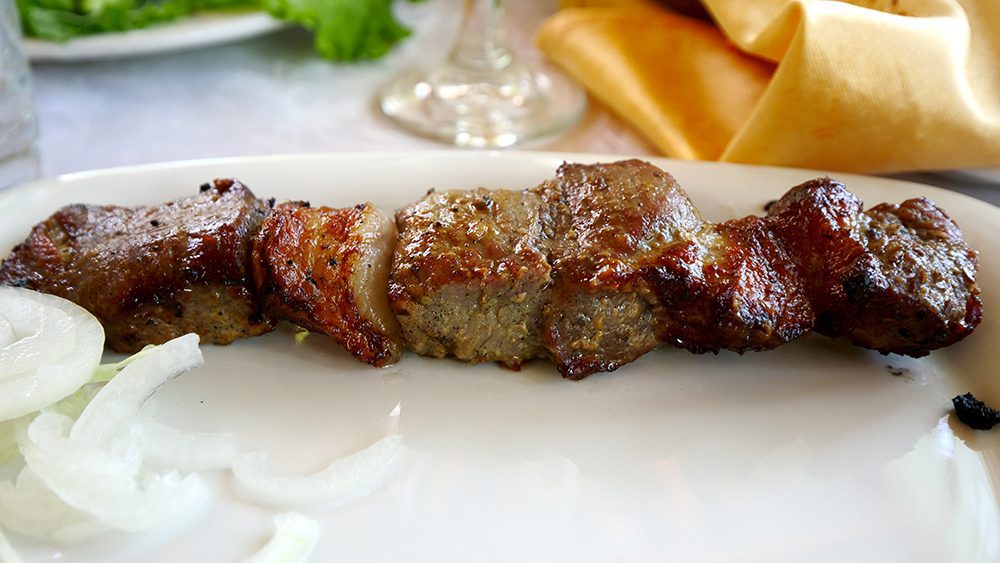
Speaking of magnificent lamb dishes, Lyabi-Hauz Restaurant also offers some amazing lamb kebabs as well. I’m a bit of a lamb aficionado, as I’ve eaten it in multiple countries around the world, including Greece, which is known for its lamb. My wife is also half Greek, so we eat lamb regularly at home. And while Greek lamb will always have my heart, the lamb kebabs at Lyabi Hauz Restaurant give it a serious run for its money!

These lamb kebabs are fatty, tender, perfectly spiced, and contain just the right amount of salt. Fat is where the flavor is, especially in meat dishes, and the fattiness of these kebabs acts as a tidal wave of flavor that washes over your entire palate.

They’re so tender on the inside that they start to melt the moment they touch your tongue, but still have enough char on the outside that you get contrasting textures in your mouth. In other words, they’re everything a good lamb kebab should be and more. They’re near the top of my list of Uzbek dishes you must try in Uzbekistan, for sure!

What’s a party without some vodka? Though the Soviet Union fell in 1991, leaving Uzbekistan and 14 other nations independent, one thing from the Soviet era that has remained popular in Uzbekistan is vodka. I had the pleasure of trying several different varieties during my 12 days in the country. My favorite was the Royal Vodka I had during the World Influencers Congress dinner and celebration in Bukhara.

The dinner took place in Nodira Devon Begi Madrasah, a school of Islam that dates back to 1622. The night was full of great food, live music, dancers, and even some hookah, but it was the vodka I returned to again and again. It had a smooth and subtle flavor and was the perfect accompaniment to our lively Uzbek party. The fact that it was produced in Bukhara was another plus!

If you’re looking for more places to find the Uzbek dishes you must try in Uzbekistan, try Old Bukhara Restaurant. This eatery in the historical center of Bukhara boasts indoor and outdoor seating, including a beautiful courtyard with trees. The outstanding atmosphere matches the quality of the food, especially its beef, string bean, and chickpea salad.
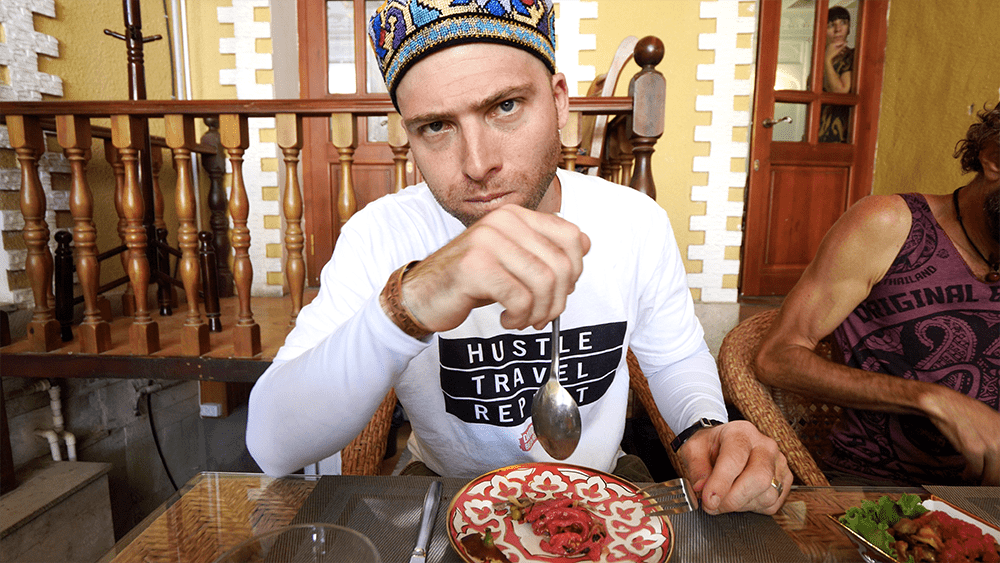
The string beans are a pretty, vibrant green color and add a nice freshness that counters the heaviness of the beef. There’s also a nice amount of fat from the beef, and the chickpeas add a nice texture and a tasty Mediterranean-like element. It’s the best salad in the restaurant and should not be missed under any circumstance!

As I mentioned earlier Uzbekistan may be a land of lots of meat dishes, but there’s also no shortage of savory, hearty soups there, either. One of the best soups you can get in Bukhara is mastava, a thick and hearty rice soup that also features beef, vegetables, and a tomato-based broth. Like a lot of other Central Asian soups, the meat and vegetables are stir-fried beforehand.
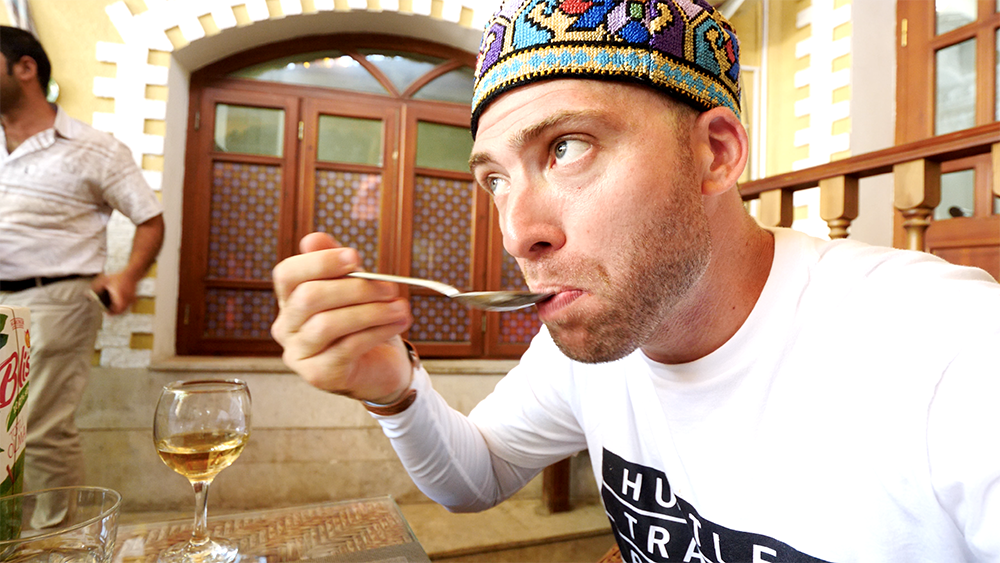
The mastava soup is quite tasty and full of flavors on its own, but it’s actually meant to be eaten with sour cream. Add a healthy dollop to your mastava and mix it throughout to add a creamy texture to the already thick soup. The rice absorbs the flavors from the broth and makes this dish a can’t-miss when you’re in Bukhara. If you wish, have some Uzbek bread with it on the side!
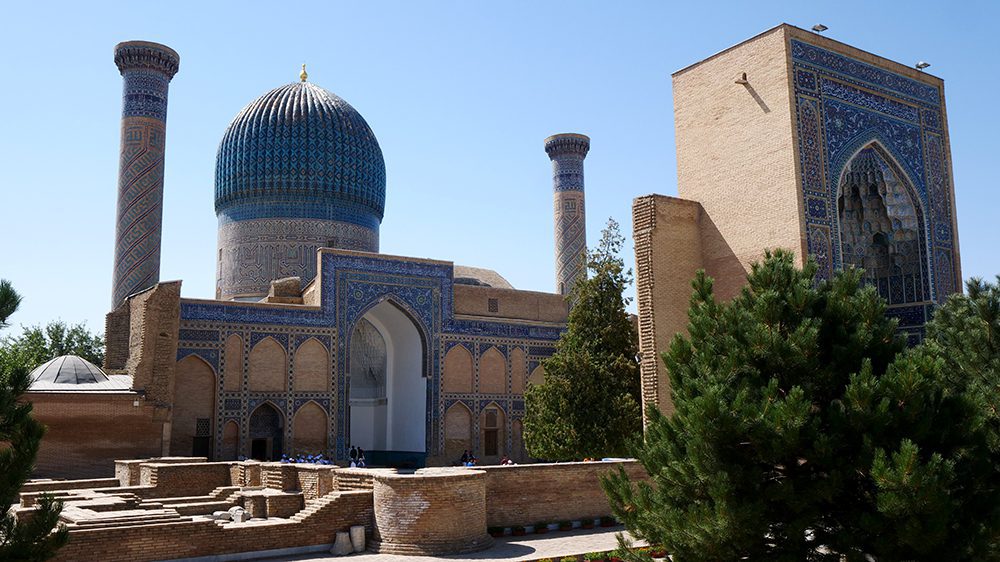
Samarkand is best known for its grand historical sites, like the madrasahs of Registan and the stunning Shah-i-Zinda necropolis. But like other cities in Uzbekistan, it caters not only to history and culture lovers, but also foodies. More than once during my time in the city, I found myself blown away by the food in front of me. If you want to try all of the Uzbek dishes you must try in Uzbekistan, you have to dine in this 2,500-year-old city!
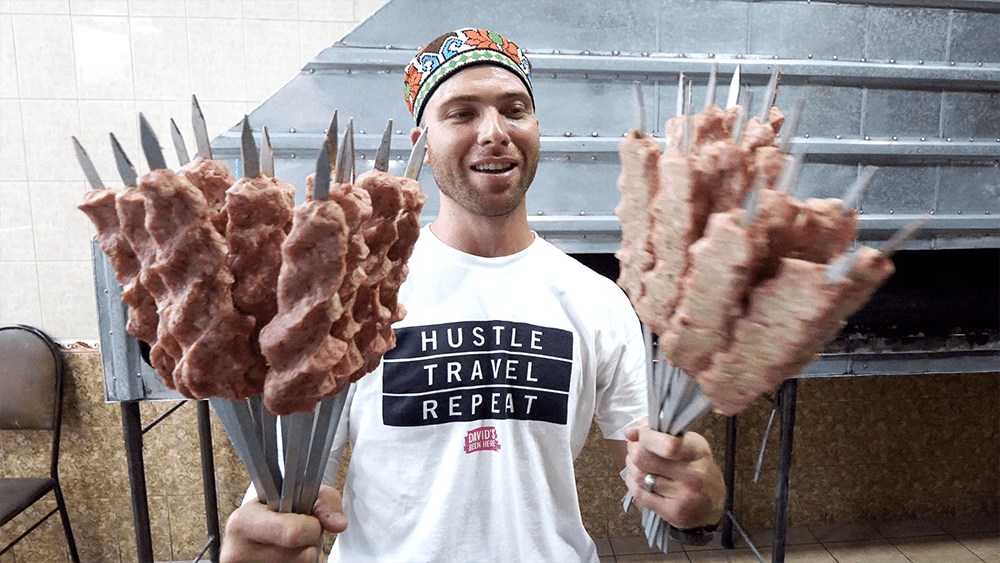
I mentioned kebabs earlier during the Tashkent section, but the kebabs at Ikrom Choyxonasi Restaurant in Samarkand are too exceptional to not talk about. This popular restaurant is known as the place to go in Samarkand when you want tasty, high-quality kebabs. They make 22 varieties in total, including lamb, sheep, beef, chicken, and liver.
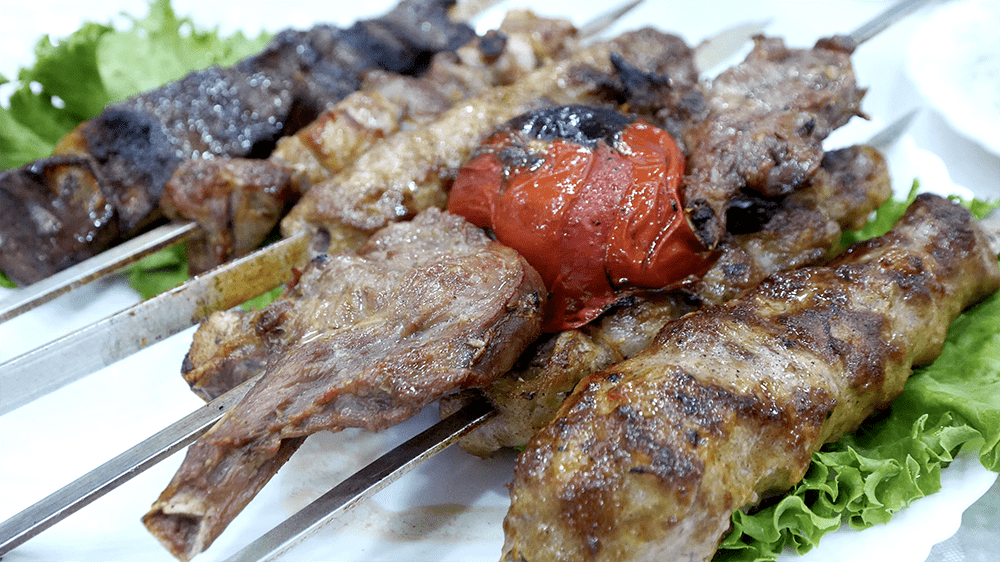
Anyone who knows me knows I am obsessed with liver. I love most organ meats, but I can never go wrong with liver. The liver kebabs at Ikrom Choyxonasi Restaurant are dense, flavorful, and a little fatty. The fat adds a new element to the iron-rich flavor I love so much. It’s some of the best liver I’ve ever eaten in my life!

By this point in my trip, I already knew the lamb kebab would be amazing, simply because every piece of lamb I’d had so far had blown my socks off. The raw onions it’s served with add a crunchy, acidic component that break up the fattiness of the lamb while complementing its amazing flavor.

The beef kebab is also outstanding. As I mentioned earlier, fat adds flavor, and the cooks at Ikrom Choyxonasi Restaurant know this. The beef kebabs have a layer of tasty fat around them and are perfectly spiced. These kebabs are mixed with bread, which gives it a wonderful texture that goes well with the gelatin-like feel of the fat. Like with the lamb kebabs, try the beef with the raw onions they serve with it! You won’t regret it!
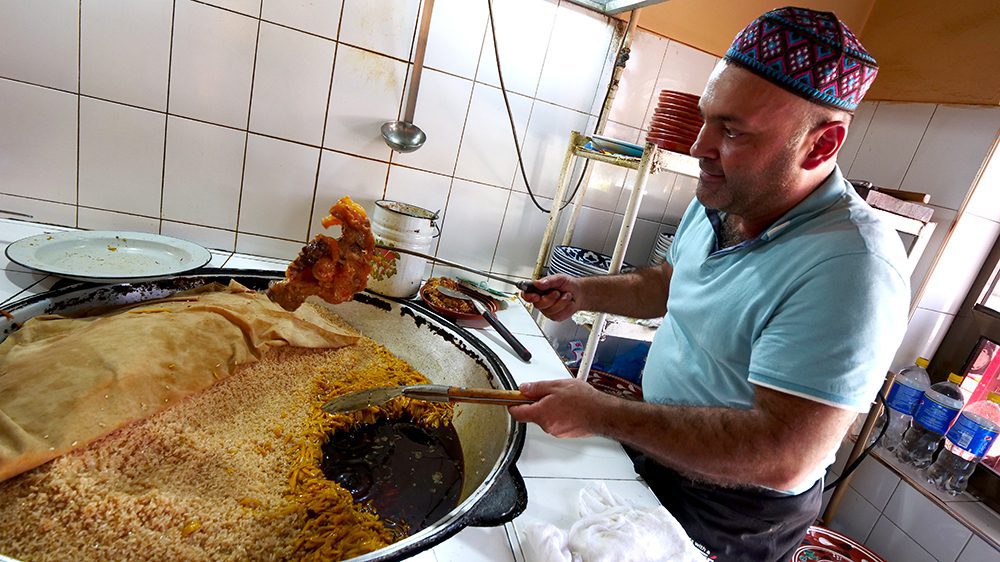
Although plov is probably the most readily available food in Uzbekistan and can be found everywhere, I recommend eating it at plov centers for the best quality. Plov centers are restaurants that focus almost solely on plov and dishes eaten on the side like breads and salads. This makes the cooks experts on Uzbekistan’s national dish, which means the plov is always of an ultra-high quality.

One of the best plov centers in Samarkand is Axmadjon Lux Osh restaurant. On their menu, you’ll find a massive Samarkand-style plov. I learned that Samarkand plov is made a little differently than the kinds I had earlier in my trip. The carrots are placed on top of the rice instead of mixed throughout. It’s also topped with beef, quail eggs, baby chickens, and horse sausage. You also get cucumbers, chickpeas, and a bit of fat as well.
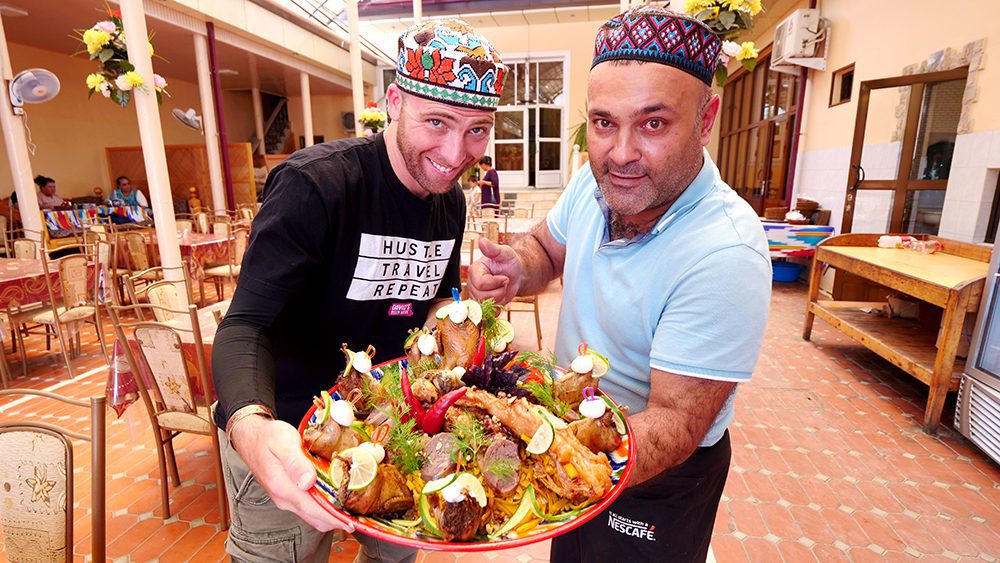
There are so many elements to this plov, it’s hard to know where to begin! The beef is tender and satisfying, while the quail eggs add a nice flavor and texture. The saltiness and gaminess of the horse sausage is always a welcome addition that goes well with the oily rice. The biggest departure from other plovs I’d had is the chicken. The meat inside the chickens is tender and juicy with a minced-like texture.

The plov is outstanding by itself, but you can kick it up to the next level by eating it with a dollop of the yogurt that’s served on the side. It adds a creaminess that had me salivating and craving more! It’s one of my favorite Uzbek dishes you must try in Uzbekistan!

Another of the tasty Uzbek dishes you must try in Uzbekistan is a wonderful meat and vegetable soup called nohot shurva. It contains several Uzbek staples, including carrots, potatoes, and chickpeas. The centerpiece, of course, is the huge slab chunk of beef down in the broth. Try this amazing dish at Samarkand Restaurant in its namesake city.

The meat and vegetables are surrounded by a beautiful broth that’s full of complex flavors. The flavors permeate the chickpeas in particular, giving them a nice, rich flavor and a great texture. I especially loved the sweetness of the carrots and the starchiness of the potatoes, but it’s hard to beat the buttery flavor and texture of the beef. Together, they’re a flavor extravaganza that will have your taste buds dancing for joy!

If you’ve ever watched any of my travel and food vlogs on my YouTube channel, you’ll probably know that I have a habit of trying raw peppers. I can’t help it—I really love the flavors, and if they have a spicy kick to them, even better! So, of course, when a large green pepper came with my meal at Samarkand Restaurant, I knew I had to go for it.
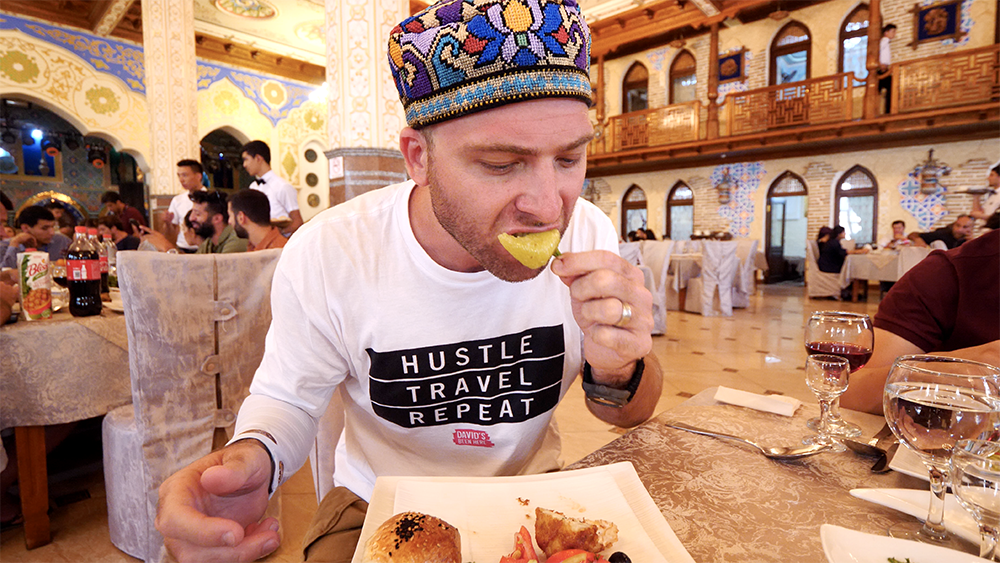
The thing I had noticed about Uzbek peppers is that they usually don’t have much heat to them, if they have any at all. Usually, that wouldn’t be my jam, but when the peppers are as juicy and refreshing as Uzbek peppers are, it’s a whole other ball game. This green pepper had so much juice in it, it was like a nice, flavorful palate cleanser between courses. If you’re scared of getting a hot one, take a nibble instead of crunching right into it like I did!
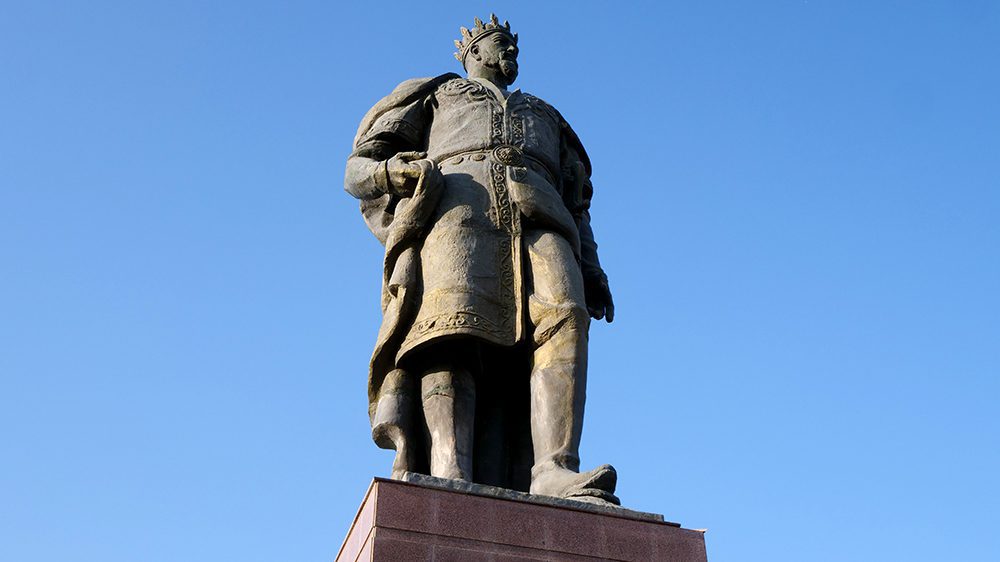
It’s a shame that more tourists don’t make the journey to the historical city of Shahrisabz. In addition to it being the birthplace of Amir Timur, the founder of the Timurid Empire, it also boasts quite a few magnificent historical sites. One of them is the Koba Caravanserai, which once served as an inn for weary Silk Road travelers. Now, the caravanserai is a restaurant that serves some of the tastiest food in Uzbekistan!

To have all of the Uzbek dishes you must try in Uzbekistan, you must eat at the Koba Caravanserai. In addition to its masterfully made food, it’s also a great place to escape the relentless Uzbek sun. The caravanserai is specifically designed so that it stays cool even on the hottest days.

Inside, you can enjoy a variety of dishes, but I recommend starting with the Koba Salad. This is a salad made up of juicy Uzbek tomatoes, crisp cucumbers, sweet carrots, sesame seeds, tender beef, and an oily balsamic vinegar dressing. It’s both oily and refreshing and the melt-in-your-mouth beef is the icing on the cake!
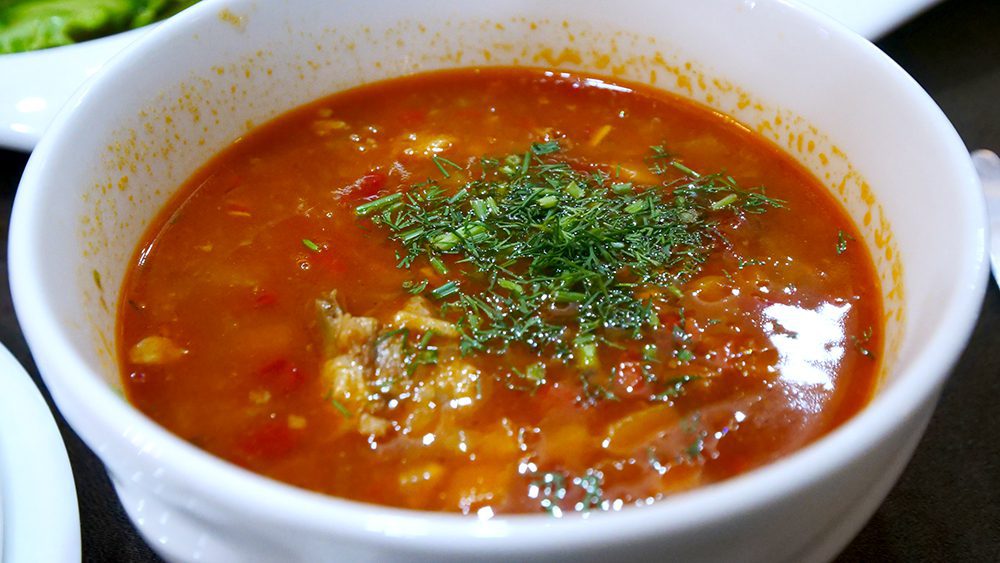
An Uzbek meal just wouldn’t be right without a flavor-rich soup, so I highly recommend the chicken, rice, potato, and carrot soup. You can’t go wrong with moist chicken and refreshing, finely diced vegetables!

The beef kebabs at the Koba Caravanserai are also out of this world. The thing I loved about them, and other Uzbek kebabs I’d had, is the perfect ratio of meat to fat. It’s never so little fat that the kebab comes off dry, and never so much that they’re overly greasy. They’re just right every single time, and the depth of flavor they’re able to get without using tons of spices is simply astounding. They’re one of my favorite Uzbek dishes you must try in Uzbekistan, for sure.

Also on the menu are a pair of beef dishes you must try for yourself. One of them was recognizable as beef ribs served on the bone. The bones gave the meat that rich flavor you only get with beef that’s cooked on the bone. The fat only added to its deliciousness! Speaking of fat, the second beef dish was bathed in an oily sauce I had never tried before. And while I couldn’t identify the flavors, my taste buds weren’t complaining one bit.

Many people may not know that Uzbekistan is a wine-producing country. In fact, as you travel through the country, it’s not uncommon to see vineyards whizzing past your car window. Those vineyards grow some exceptional grapes, which are the source of some of the country’s phenomenal wine. Enjoy a glass of red wine with your beef feast at the Koba Caravanserai. After all, is there is a better food-and-drink combination out there than red meat and high-quality red wine?
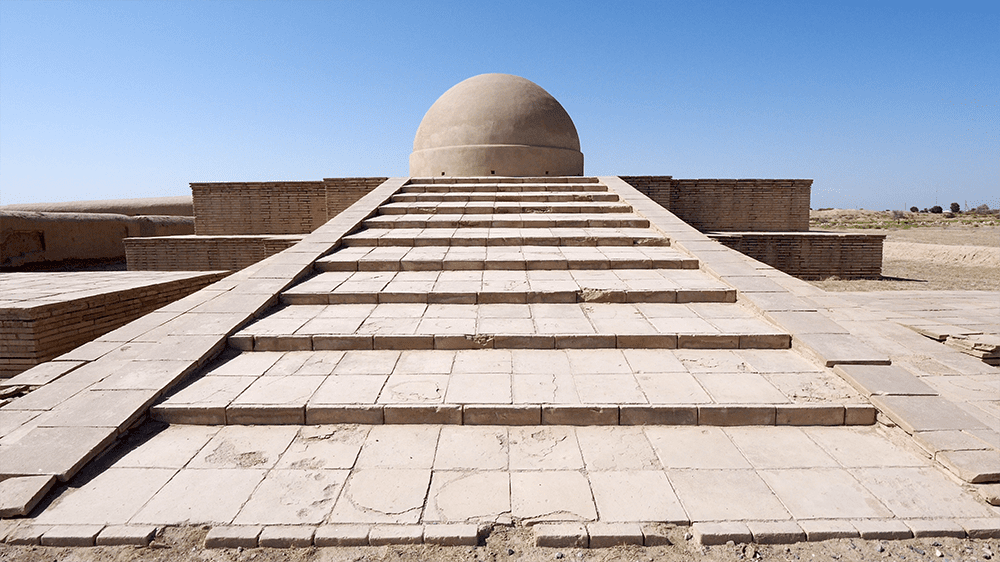
If few people travel to Shahrisabz, even fewer make the trek down to Termez, a historical city right on the border with Afghanistan. It’s the hottest city in the country and a treasure trove for lovers of ancient history. To my surprise, it’s also a prime location for foodies to explore. During my time there, I found so many Uzbek dishes you must try in Uzbekistan, including the ones below!
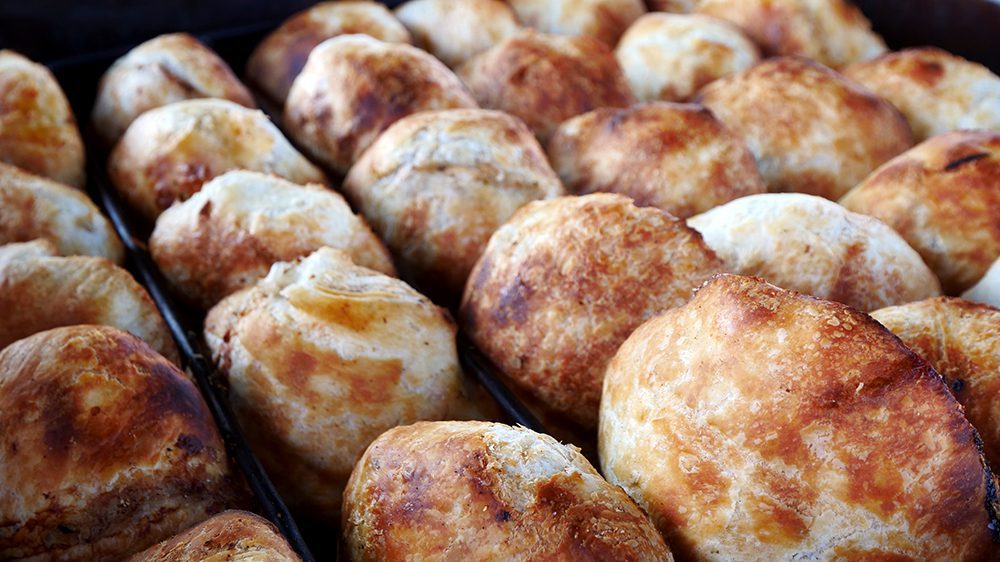
Speaking of the ride down to Termez, if you’re coming from Shahrisabz in a taxi like I did, the journey will take you roughly five hours. Along the way, you’ll probably get hungry and need a bite to eat. About two hours or so into the journey, I got hungry, so my taxi driver pulled into a small, roadside restaurant in a tiny town. There, I had yet another of the most incredible Uzbek dishes you must try in Uzbekistan!
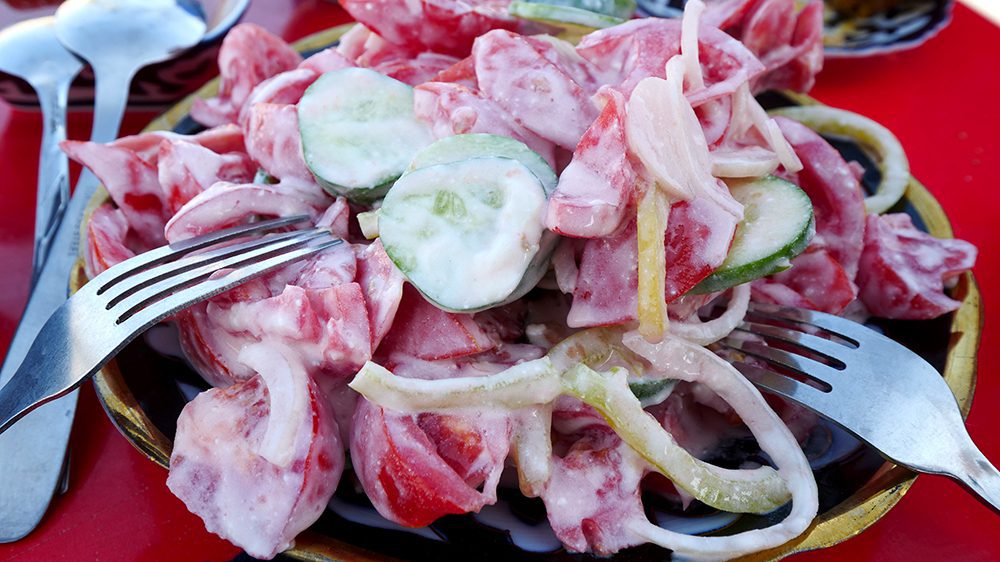
After enjoying an unreal somsa and a delicious tomato salad with a cheesy dressing, my taxi driver ordered a huge plate of beef with onions. The beef also contained liver! The beef had an extraordinary flavor and had a nice amount of fat on it. I loved the liver as well, which was smooth and buttery.

I quickly learned, thanks to my taxi driver, that the best thing to do is to eat the beef and liver with pieces of Uzbek bread. But the real moneymaker is when you add some of the leftover dressing from the salad to your makeshift beef-and-liver sandwich. The rich creaminess and cheesiness of the dressing with the meat and soft, fluffy bread was a combination I never knew I needed.
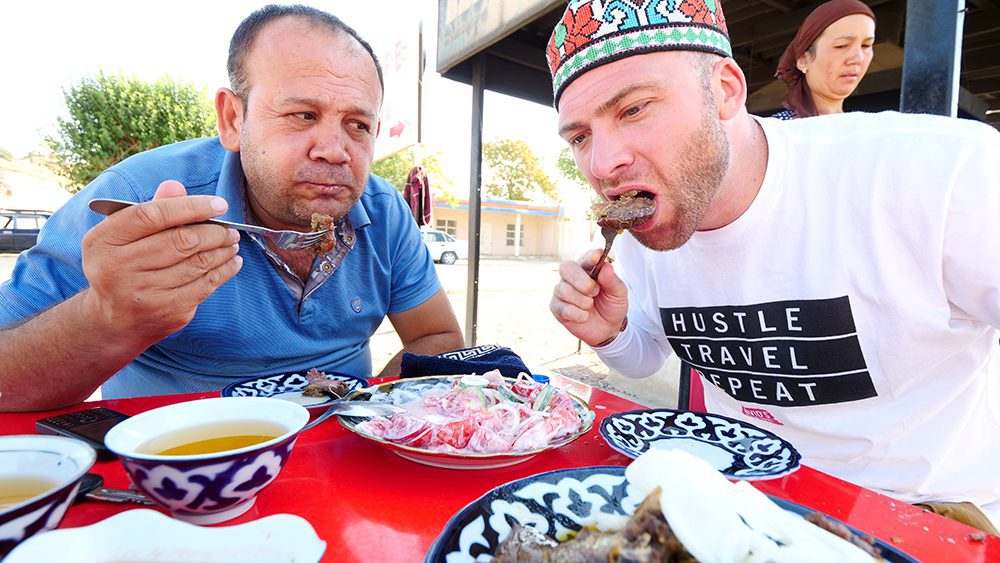
Afterward, finish off your meal with a cup of Uzbek Mountain Tea, which helps aid your digestion!
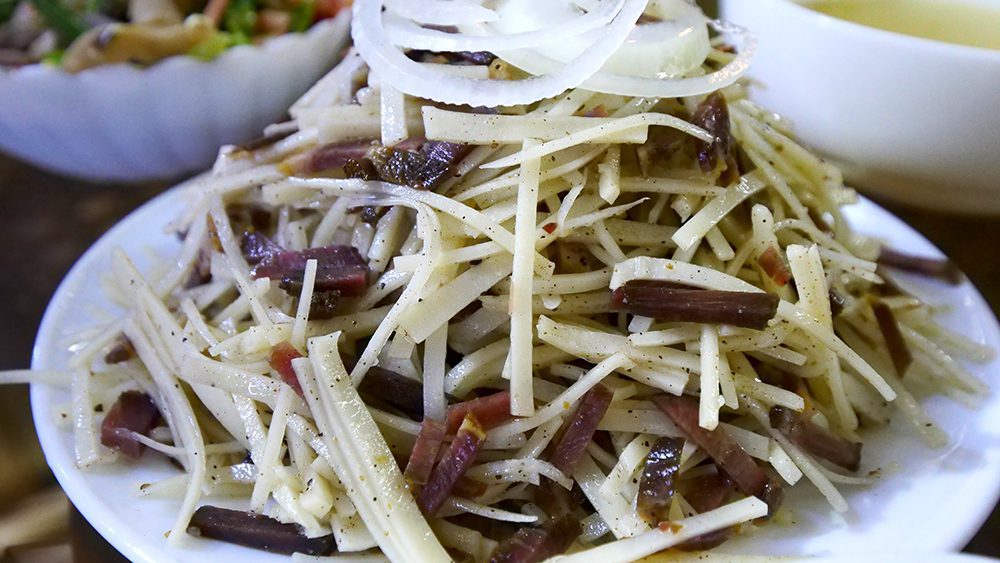
Once you arrive in Termez, there are tons of gastronomical options at your fingertips. But just in case you missed the norin at Chorsu Bazaar in Tashkent, you can have a slightly different version at Restaurant Dubai.
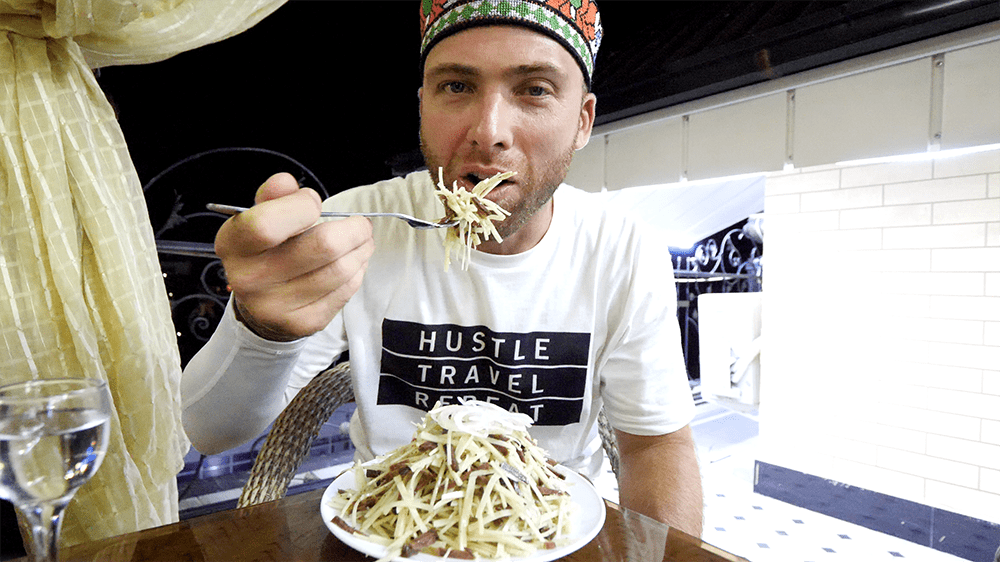
When I visited Chorsu Bazaar, I mistakenly thought the pasta in the norin was cheese. It had a slight cheesy flavor that I don’t usually associate with wheat pasta. By the time I got to Termez, I knew better. During my meat-rich feast on the rooftop terrace at Restaurant Dubai, I tried a variation of norin that tasted like exactly what it is: horse meat and pasta. The wheat flavor went very well with the salty, gamy horse meat strips. It was very addictive and I couldn’t help but devour all of it!!

Earlier, I talked a bit about how one of the drinks from the Soviet era that has stuck around in Uzbekistan is vodka. But in Termez, you can try a full-on Soviet meal for breakfast at Café Bistro!
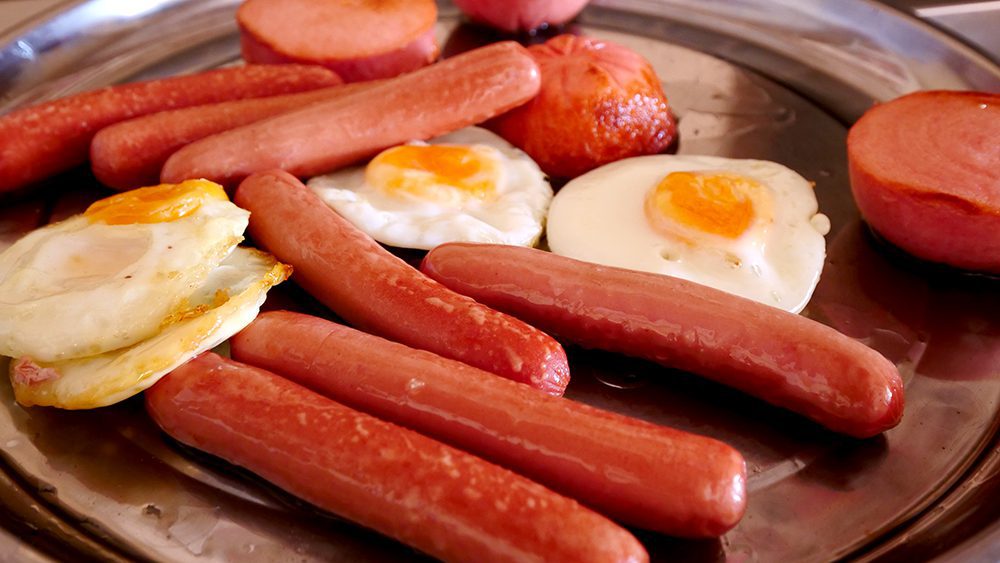
Café Bistro also sells Uzbek food like pumpkin-and-onion-filled somsas and a milky, cardamom-rich oatmeal. But I wanted to get a taste of a typical Soviet-style breakfast, so I also got some beef strips, penne pasta with beef and onion, rice and gravy, eggs, and a huge sausage slice.
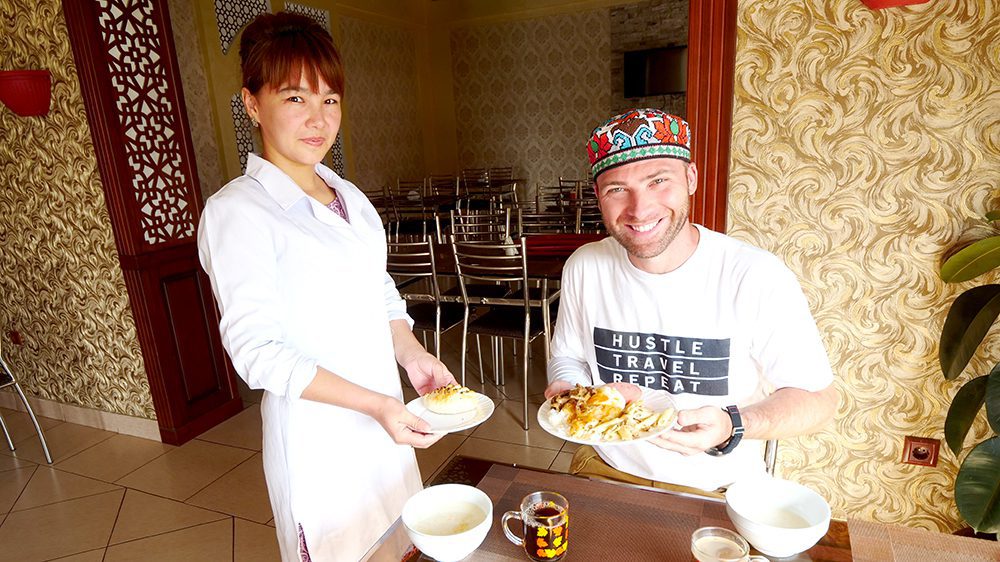
The beef strips were nice and tender, while the pasta with beef and onions had a really nice flavor and texture. The gravy on the rice was nice and earthy with a mushroom-like flavor, but the yolk on the eggs was too overcooked for my liking. The sausage was downright massive and way too big for me to even make a dent in!
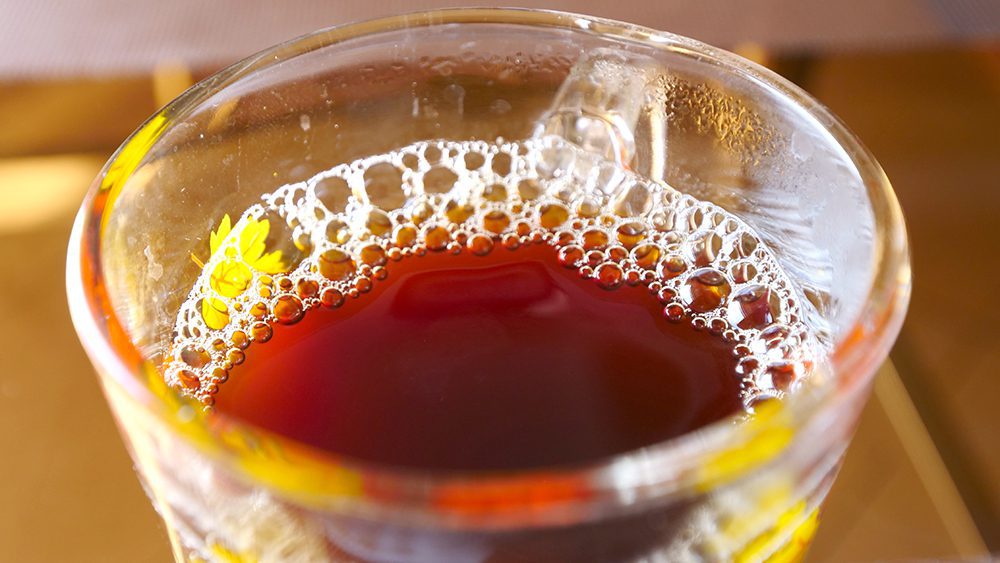
All in all, while it wasn’t my favorite breakfast in Uzbekistan, how often can you say you’ve had a Soviet breakfast? For that reason, it’s one of the Uzbek dishes you must try in Uzbekistan!

I’ve mentioned somsas several times in this food guide of the Uzbek dishes you must try in Uzbekistan. The thing is, they’re so tasty and varied that you can’t try too many of them. During my time in Termez, I went on a mini somsa tour of two local eateries and was blown away by what I found.
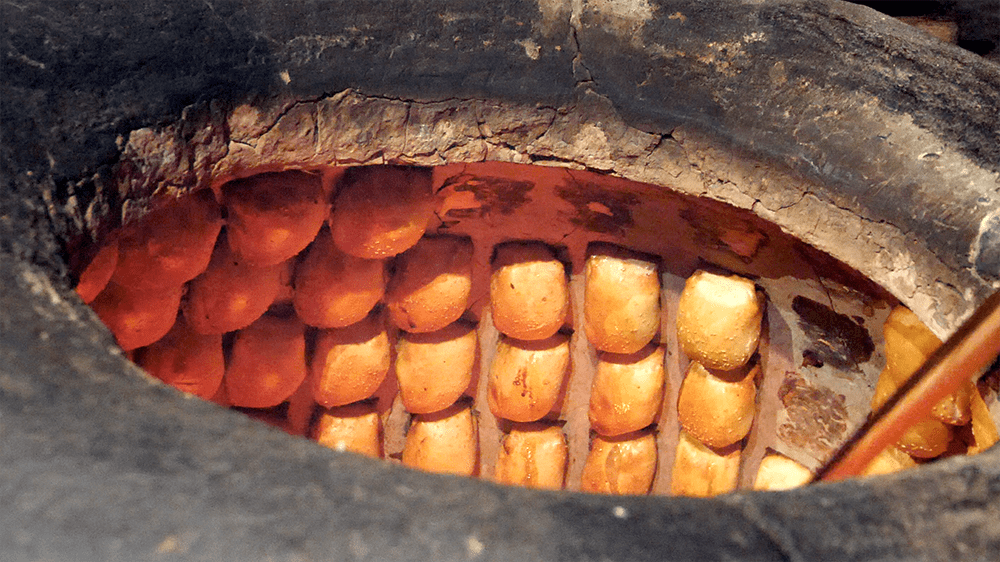
Your first stop should be at Sina Restaurant, which is named after the Uzbek town the owners are from. There, they use the regional somsa recipe from the town of Sina. From the moment these crispy, perfectly browned pastries come out of the tandoor, you know they’re going to be exceptional.

They’re perfectly cooked and have a nice balance of beef, onions, and lamb fat inside. But the thing that takes these somsas to the next level is the gazpacho-like tomato sauce you eat them with. It adds a refreshing, tangy acidity that has to be tasted to be believed!
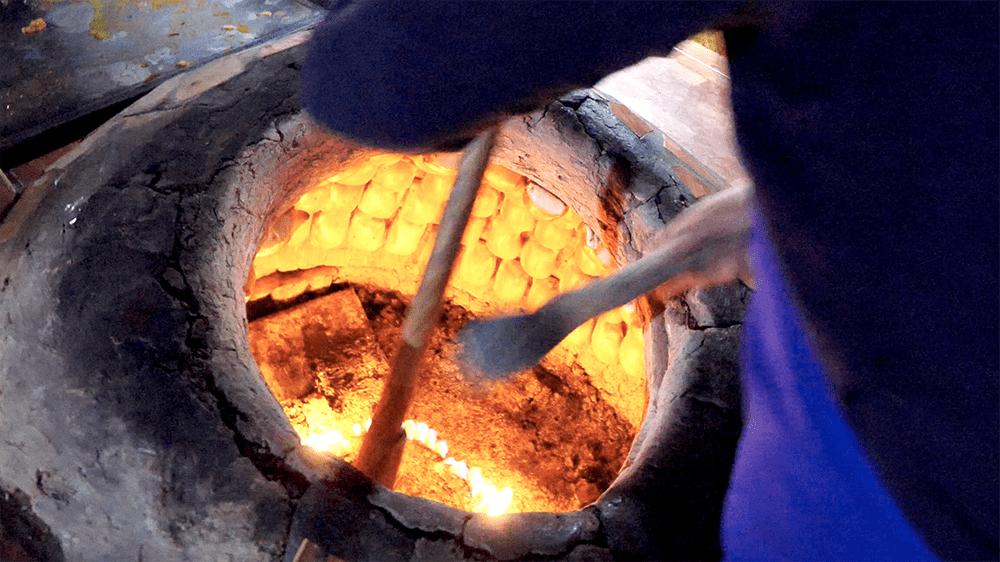
Assuming you don’t fill up on somsas at Sina Restaurant, make a second stop at Denov Restaurant. The restaurant is conveniently located in the middle of an open-air food court. There were lots of interesting-looking options around, but I had tunnel vision. I was there for somsas.

At Denov Restaurant, they make yet another regional variation of somsa that was slightly different from others I’d had previously. These had a very buttery and crispy exterior, while the beef inside is perfectly cooked and complemented by diced onions. Like at Sina Restaurant, these somsas are also served with a tomato sauce, but this one has a spicy kick! It was one of the few dishes I had in Uzbekistan that was truly spicy. I loved every minute of it. If you’re ever in Termez, be sure you don’t miss it!

Roughly a 30-minute drive north from Termez will take you to the tiny town of Jarkurgan, Uzbekistan. “Off the beaten path” doesn’t even begin to describe this small town, whose most prominent claim to fame is the minaret that stands a few miles outside its limits. But dismissing this town would be a mistake, as it’s a prime location to learn about Uzbek culture. It’s also home to the best lamb I’ve ever eaten in my life.
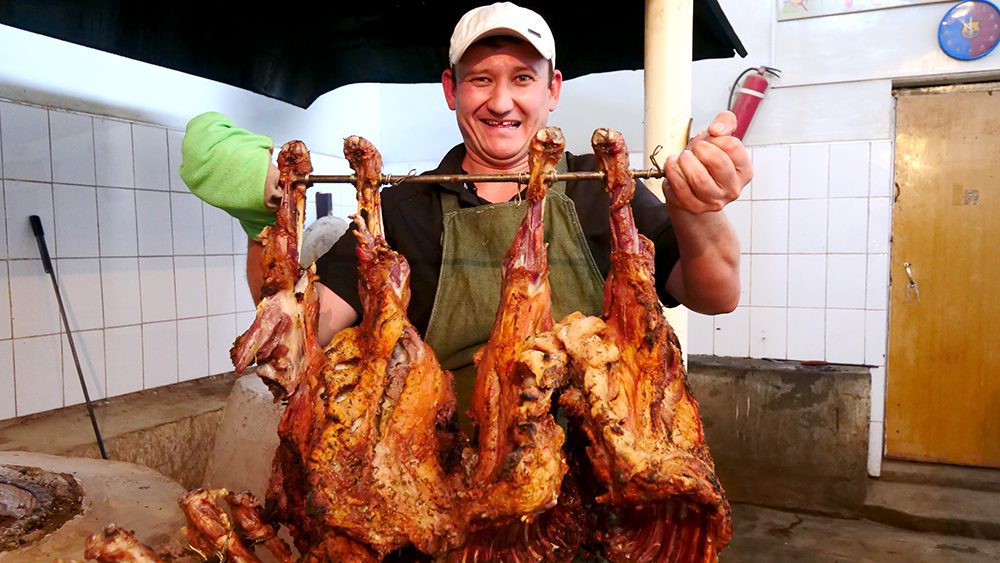
In a non-descript restaurant in Jarkurgan that I almost confused for someone’s home, is where you’ll find my single favorite meal in Uzbekistan. It’s so obscure that I never would have known about it if I hadn’t teamed up with the World Influencers Congress.
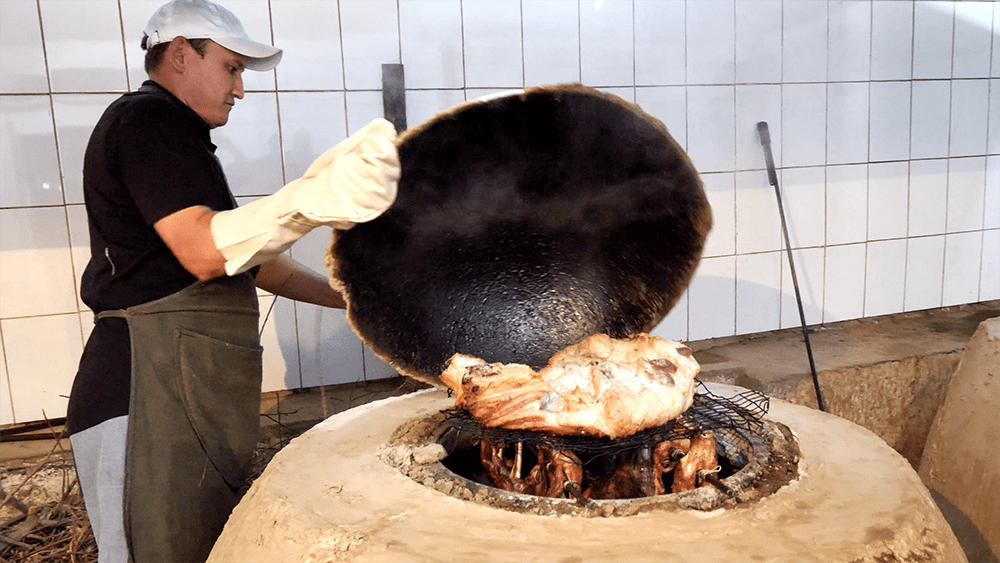
The cooks begin by salting and resting the lamb. Then, they place the legs, a huge slab of meat, and a large piece of fat in a tandoor oven. Eighty minutes later, they pull out what can only be described as magnificent, fall-apart-just-by-looking-at-it goodness sent straight from heaven.

Every bit of meat is infused with the mouthwatering, smoky flavor you can only get from a clay oven. The lamb fat melts over everything in the tandoor. It bathes the meat in a sort of oily sauce that’s tasty enough to drink. Whether you go for a leg or a chop, the meat is crispy yet juicy.

It’s tender yet hearty, gamy yet fresh. The chicharron-like quality of the roasted skin, in particular, is heavenly. I was nearly at a loss for words as my friends I dug in with our hands and demolished it.

But my favorite part of the lamb feast were the innards. They cooked both liver and kidneys in the tandoor with the rest of the meat. They came out better than I could have anticipated. The liver was buttery and so soft, it practically fell apart in my mouth without me even having to chew. The kidneys also had an iron-rich flavor that melded with the smoky tandoor flavor as well. Of all the Uzbek dishes you must try in Uzbekistan, this was my favorite. It’s the one you have to try, no matter what!

Whether you have a hankering for a tasty beef pastry, a traditional rice dish, or what is surely some of the best lamb in the world, Uzbekistan has you covered. It’s an embarrassment of riches for foodies that most foodies don’t even know about. Uzbekistan is a land of few spices, and yet it boasts complex flavor profiles, intoxicating textures, and some of the freshest meat and produce on the planet.
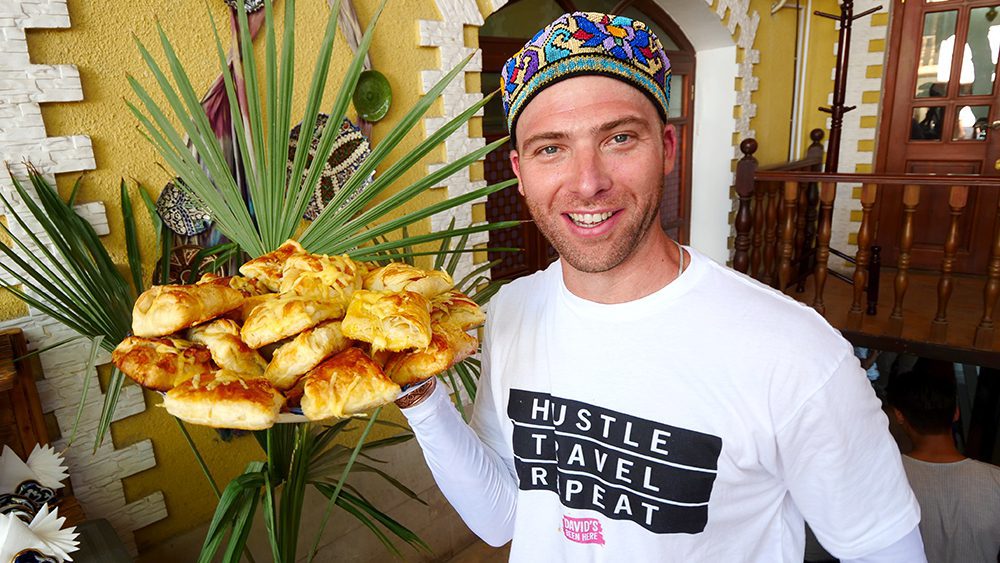
If you’re a foodie who wants to travel to a corner of the globe that hasn’t been done to death while enjoying phenomenal cuisine, Uzbekistan should be your next stop. It will change your life. Book a flight to Tashkent today to begin your Uzbek food adventure!
NOTE: If you need to check the visa requirements of a particular country, click here. To apply for a visa, find up-to-date visa information for different countries, and calculate the cost of a particular visa, click here!
Counter
101 Countries • 1432 Cities